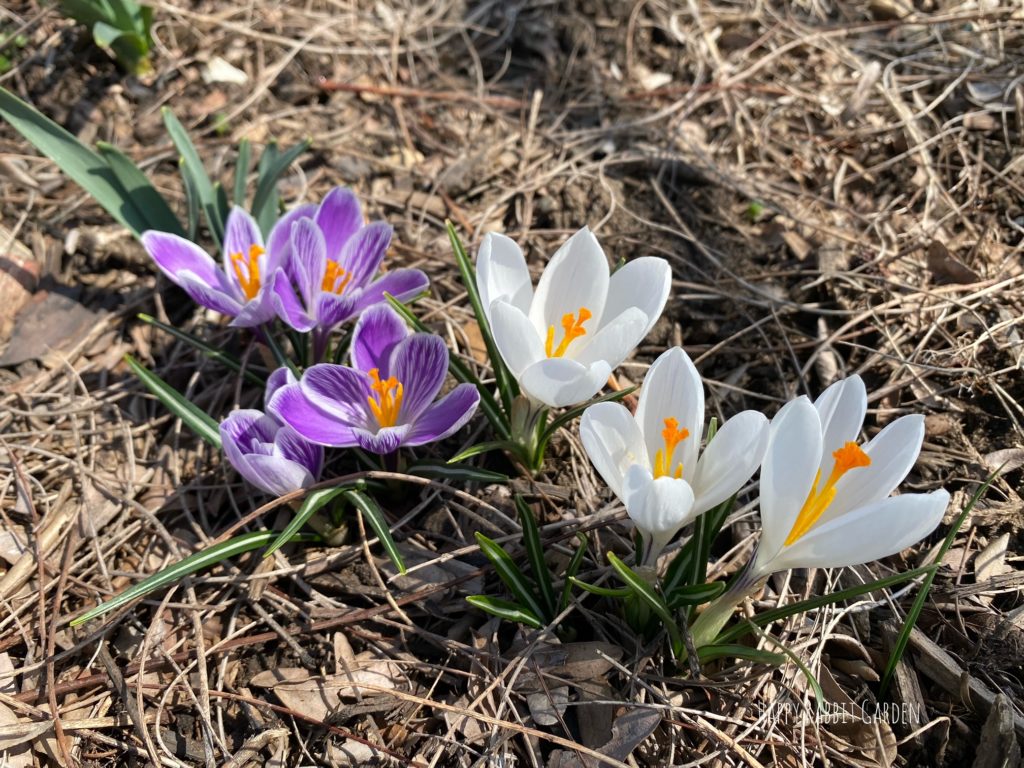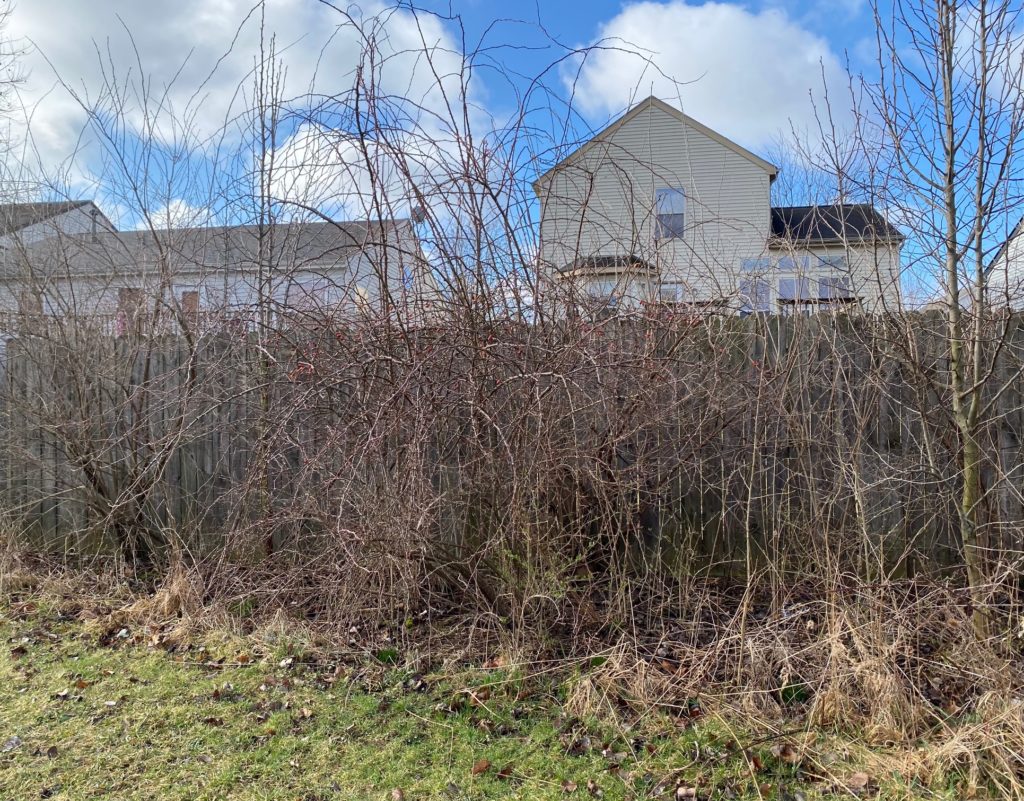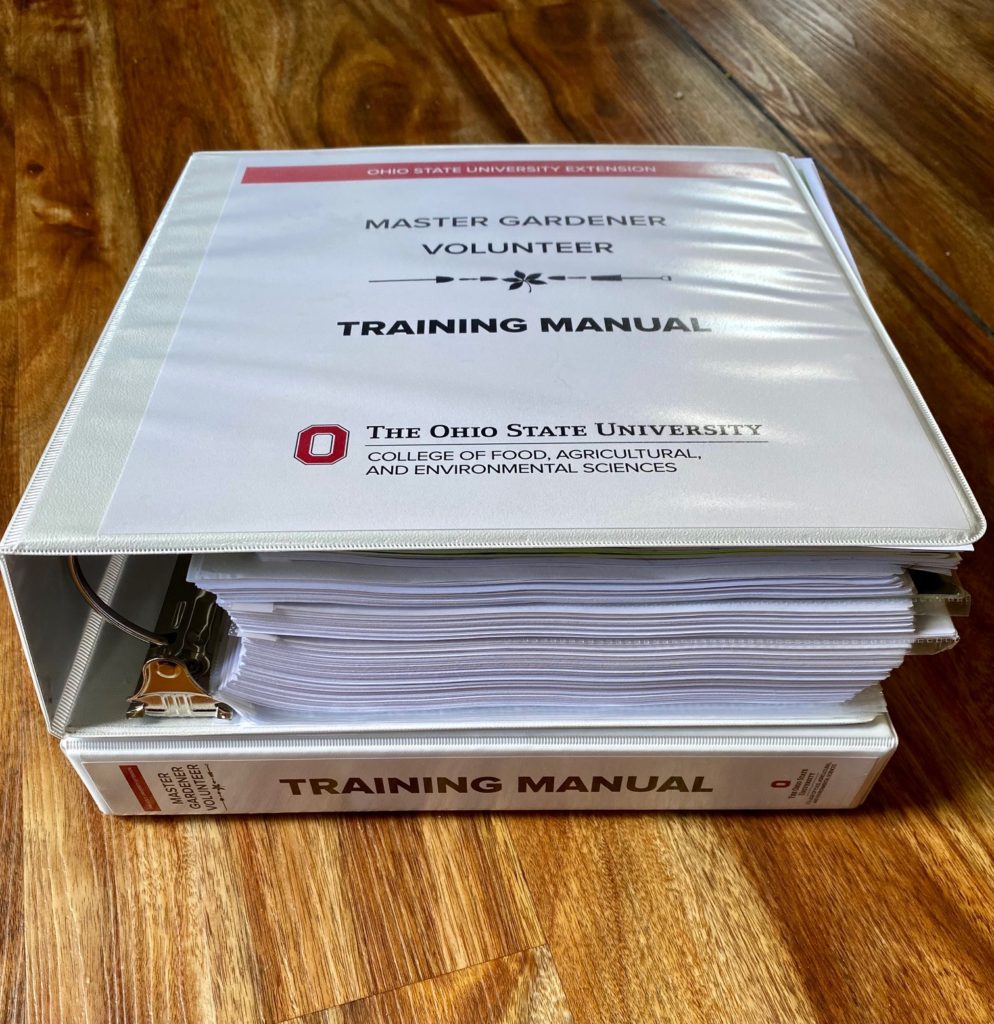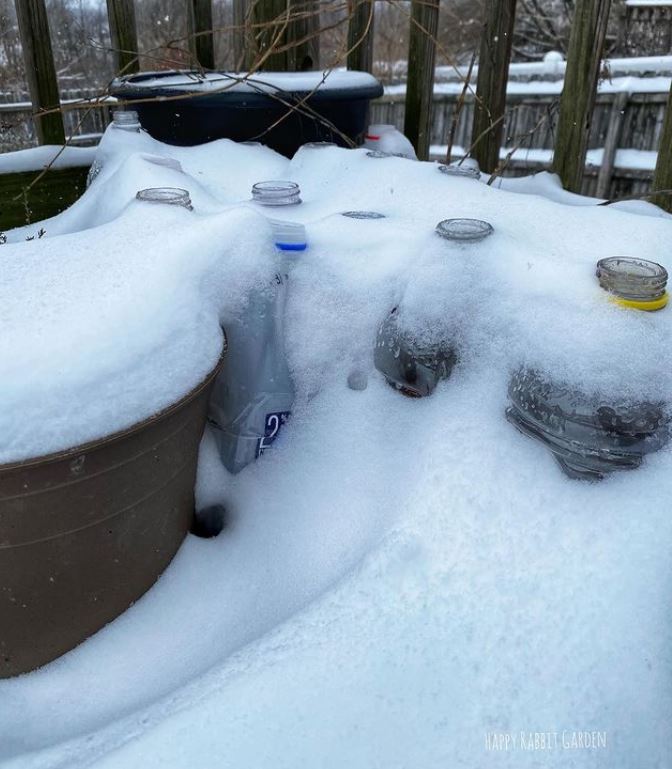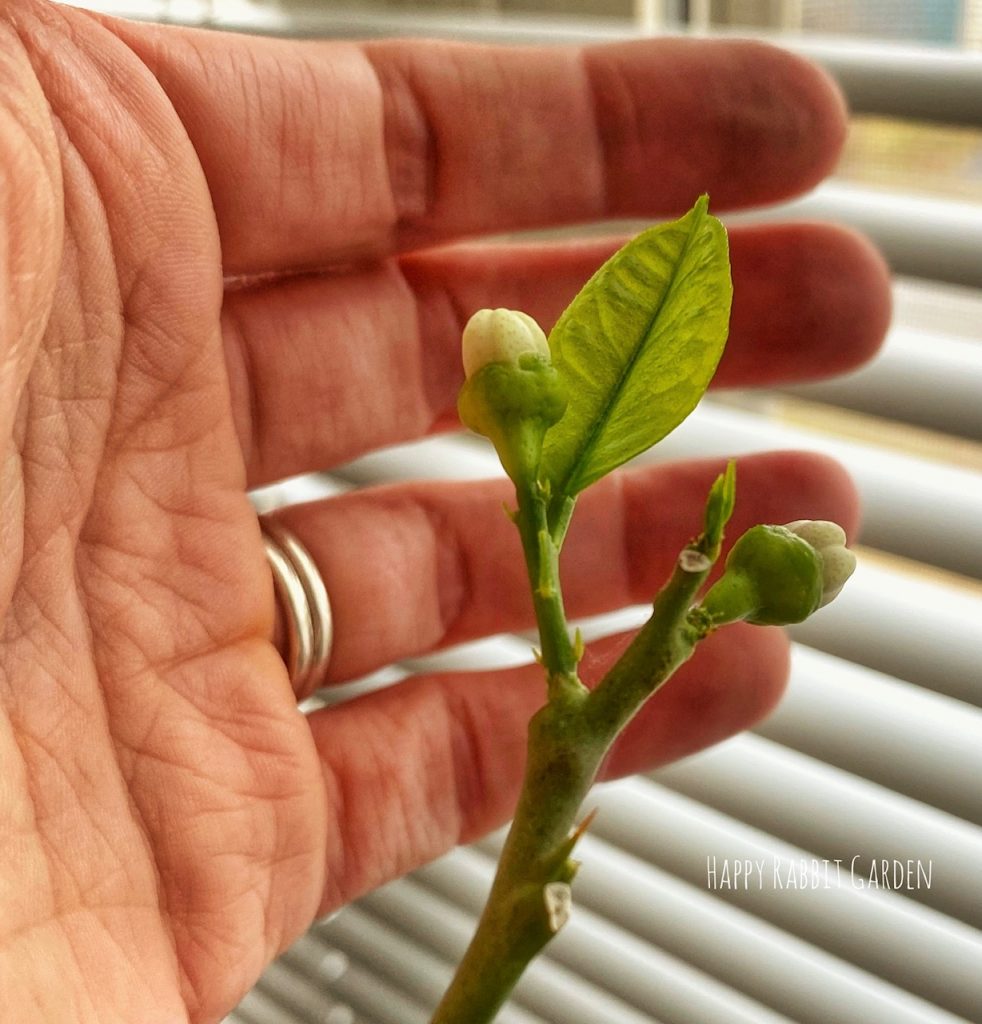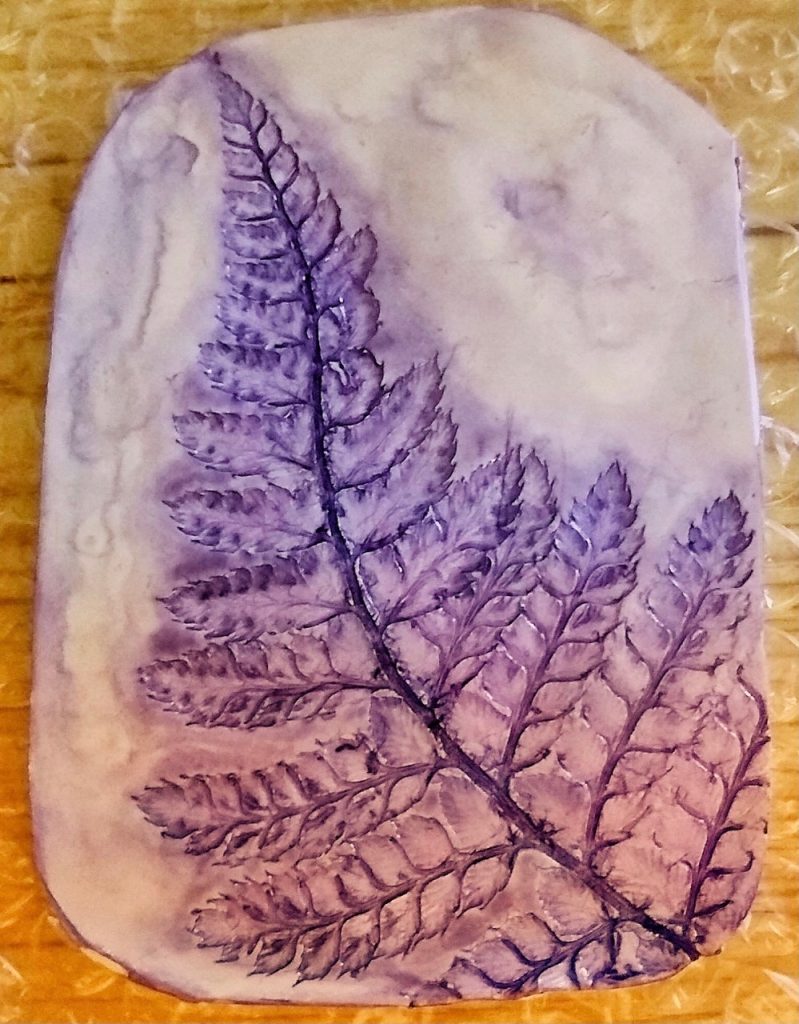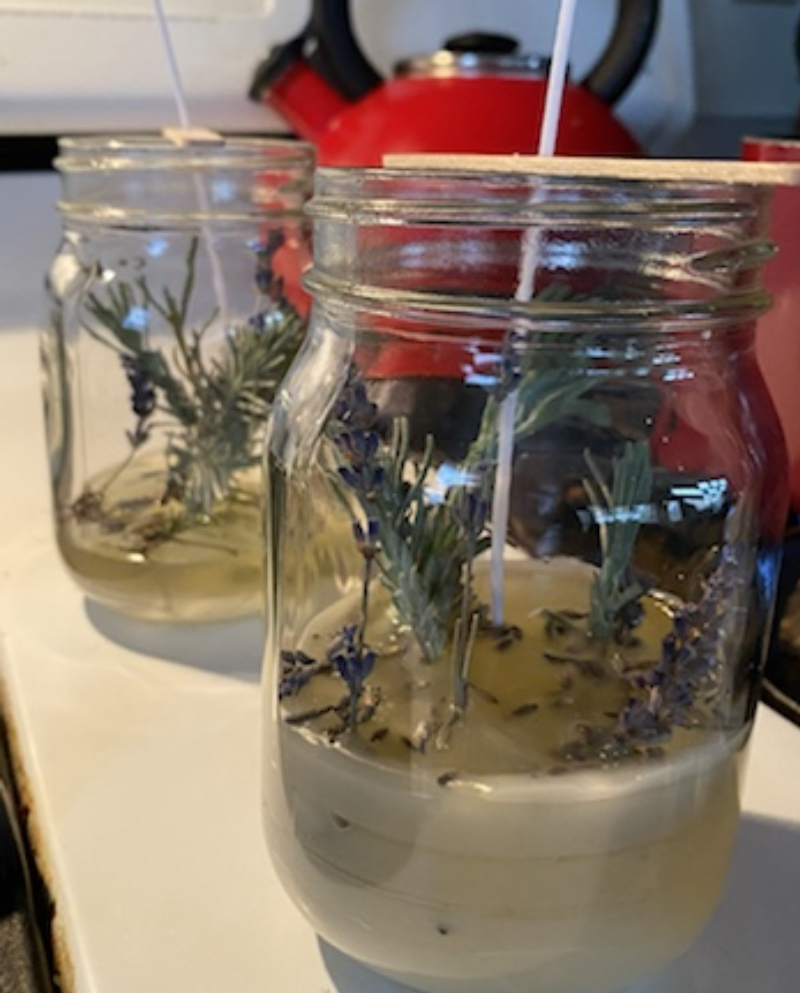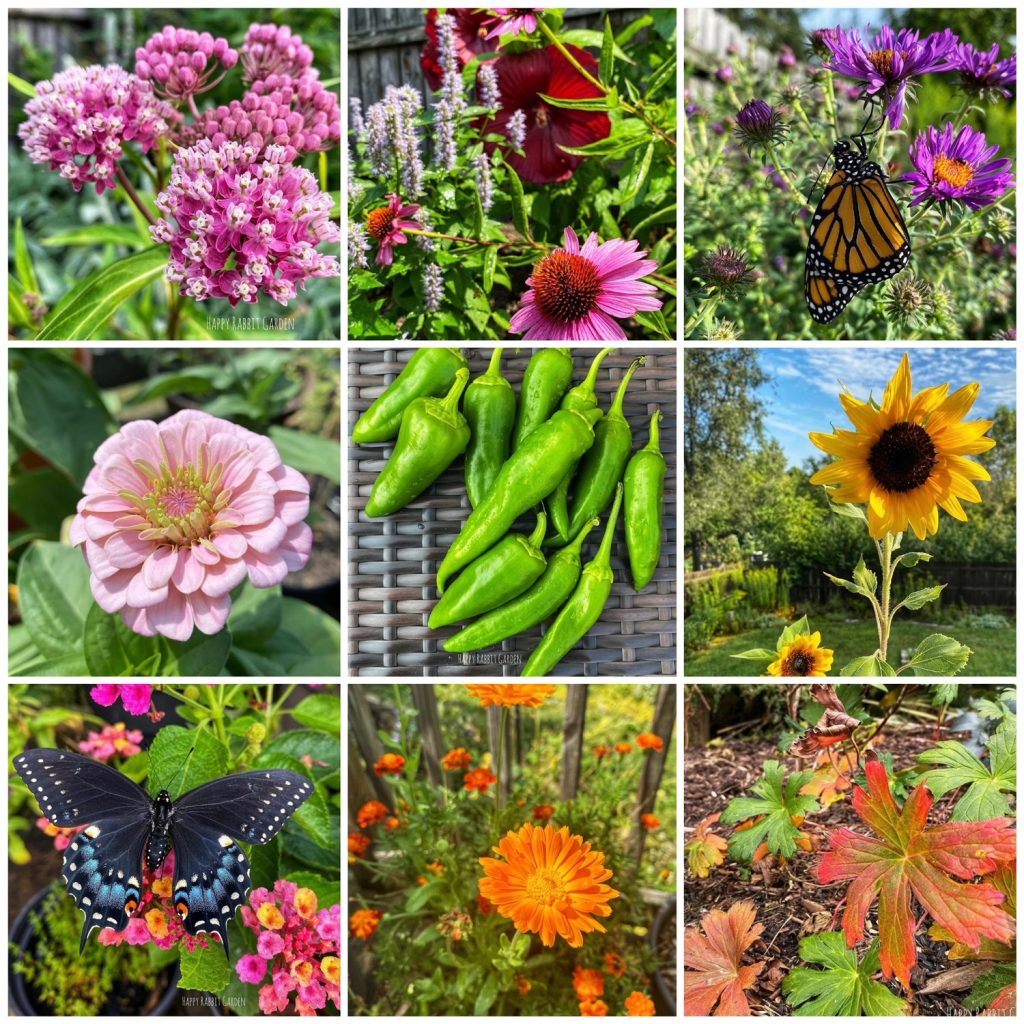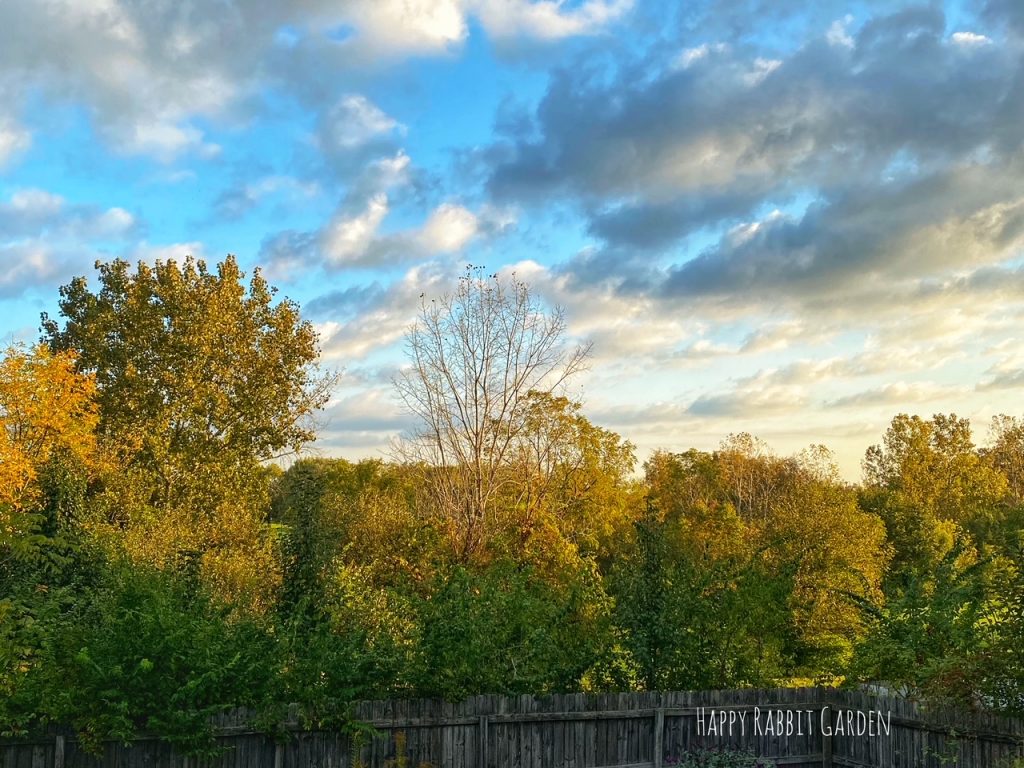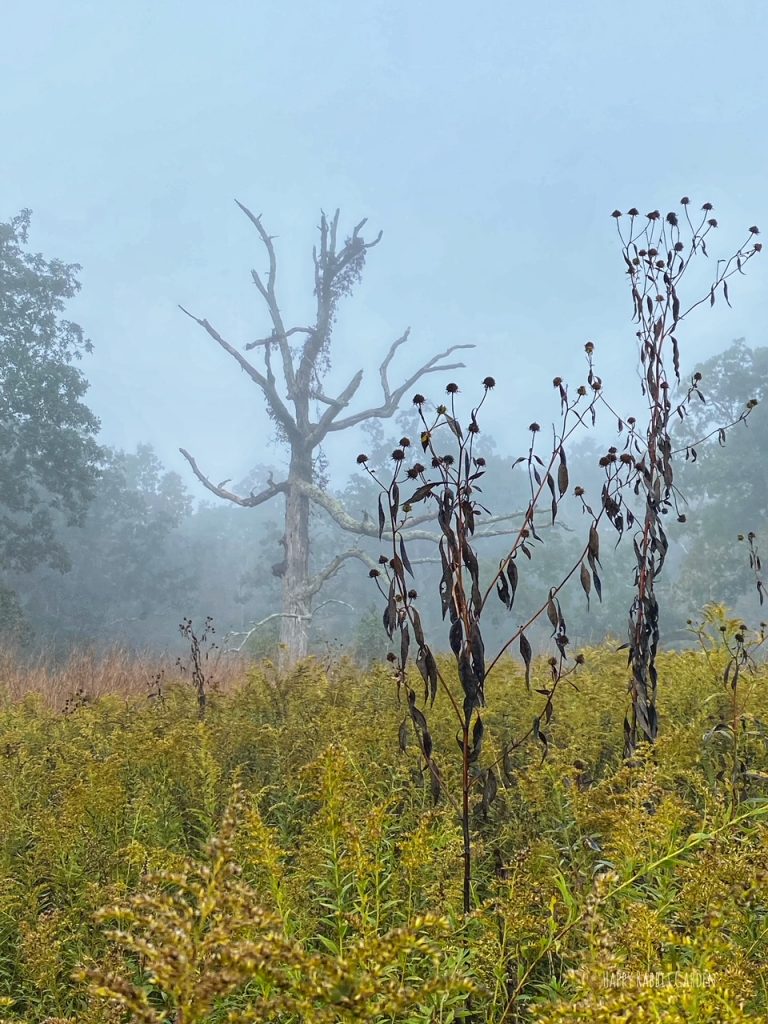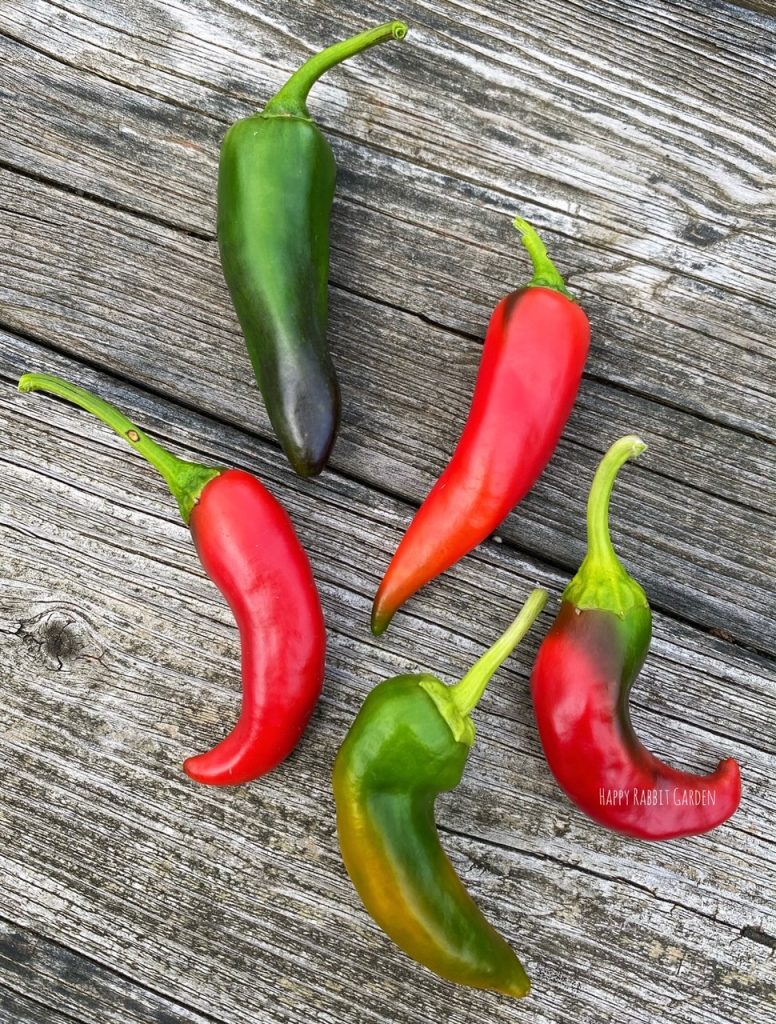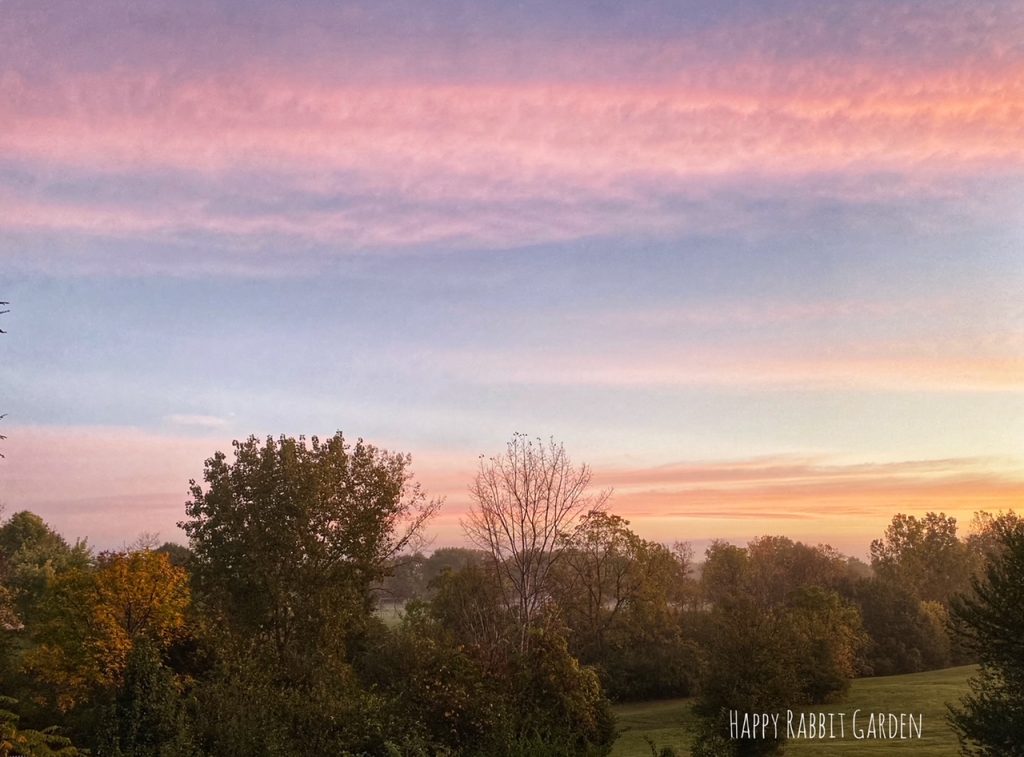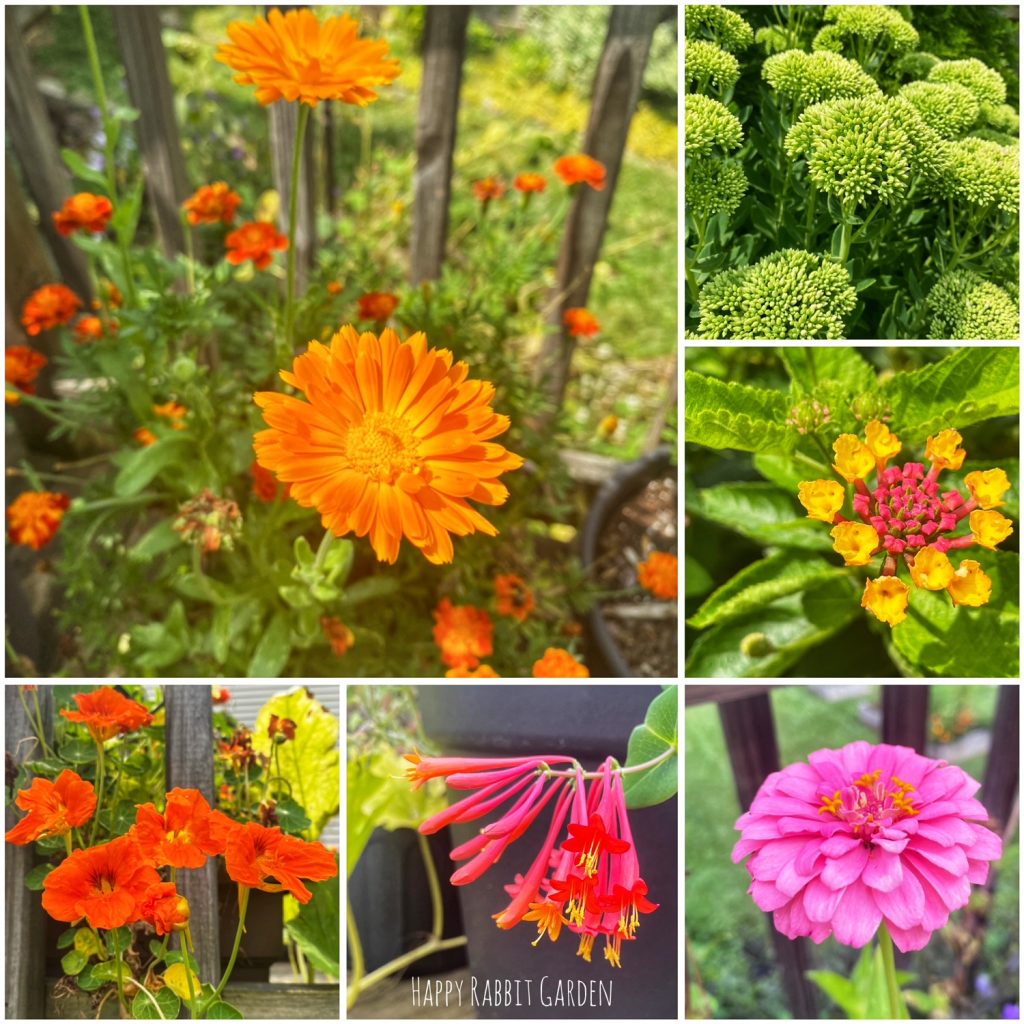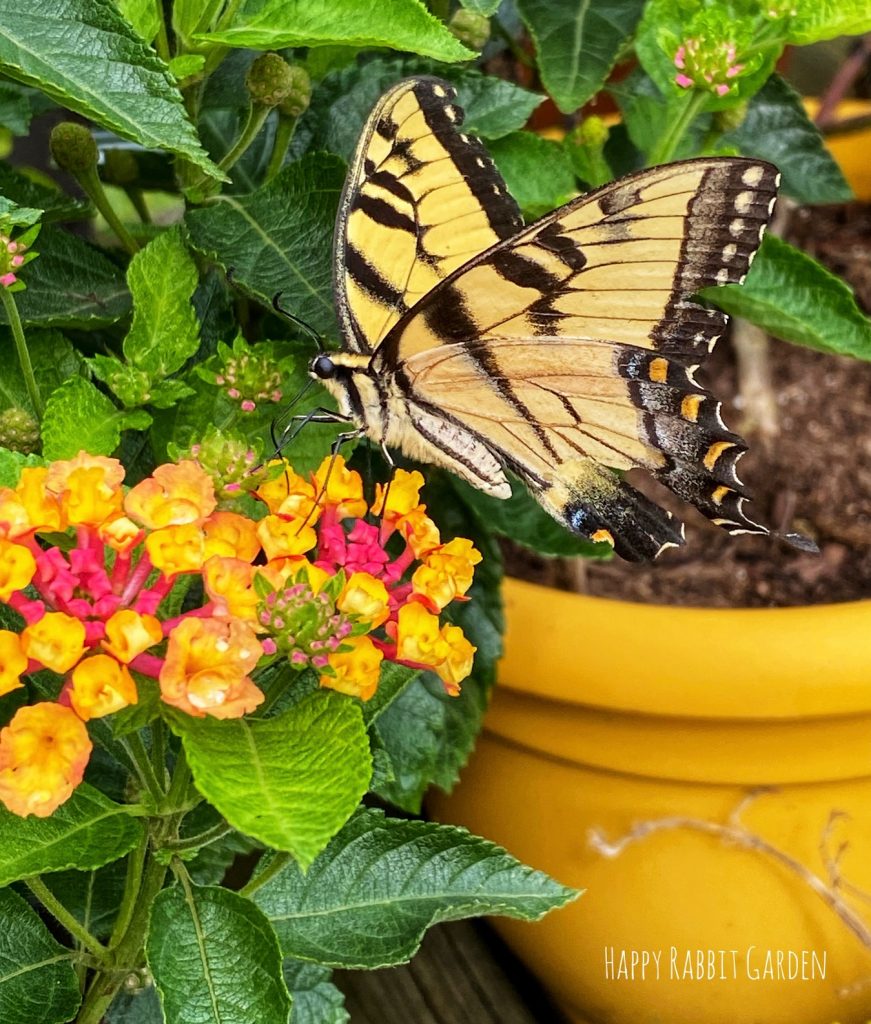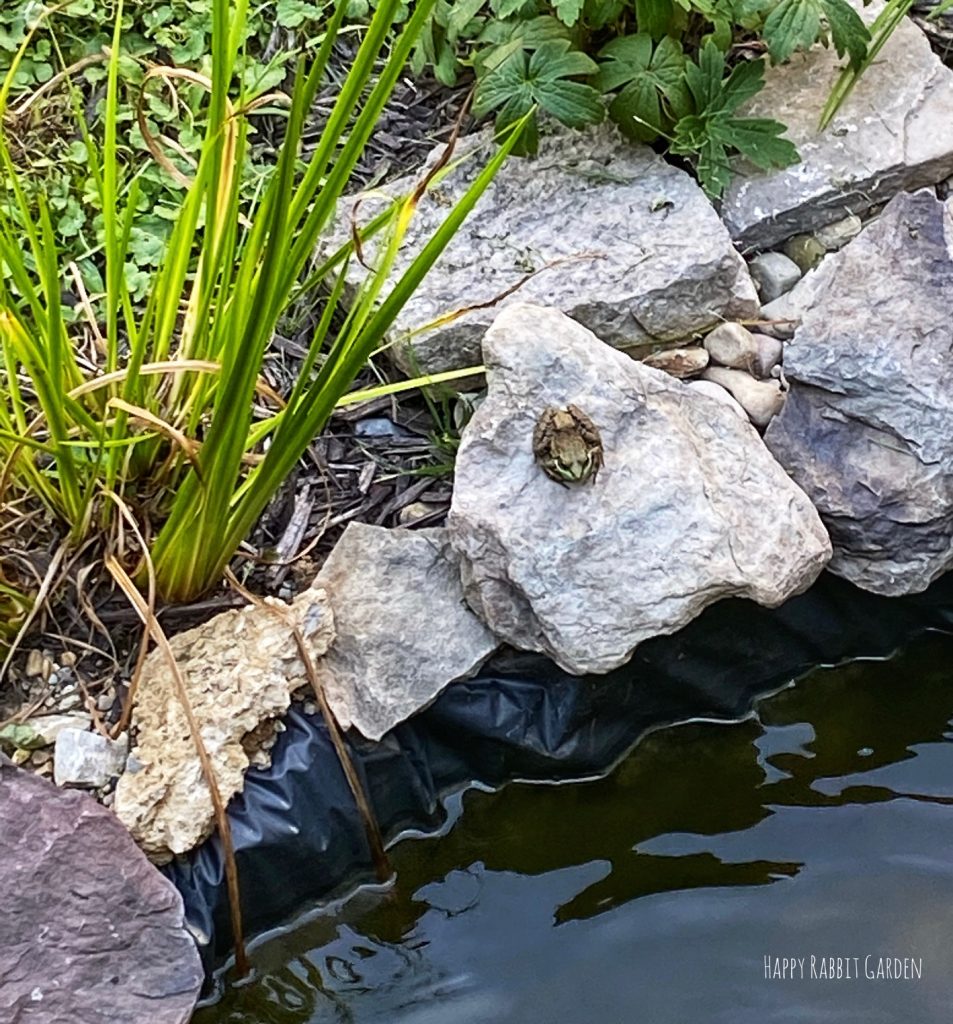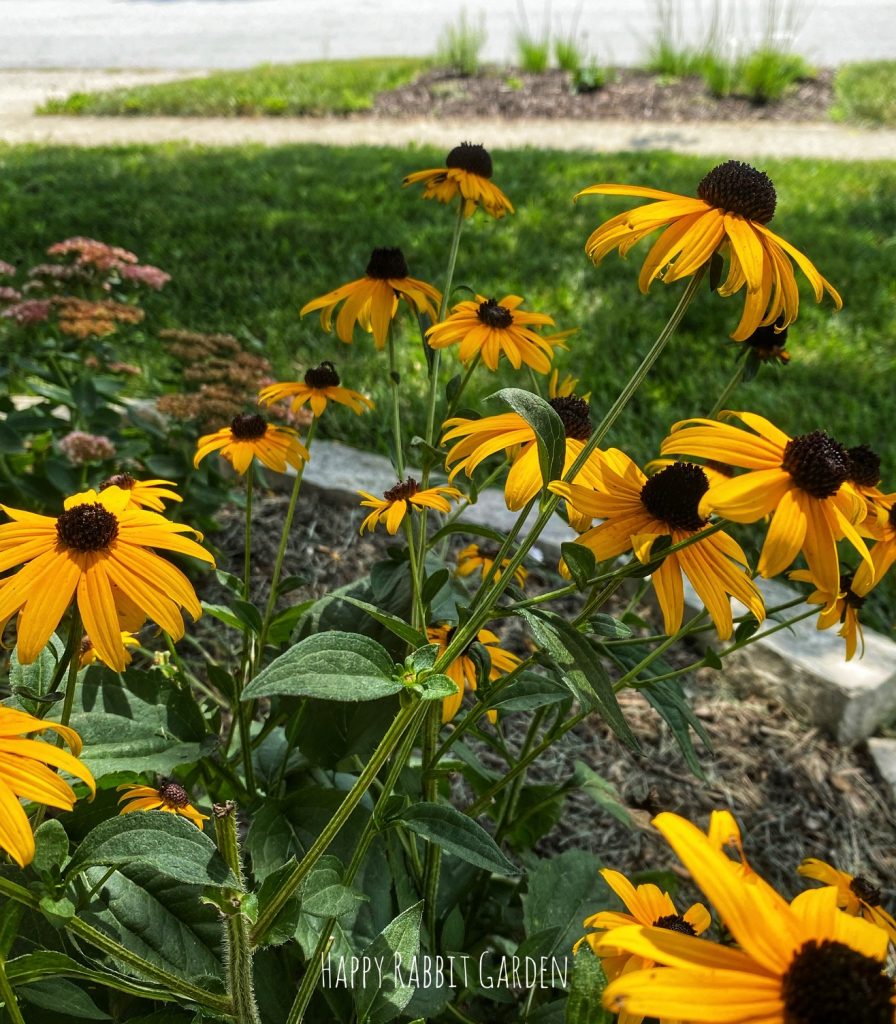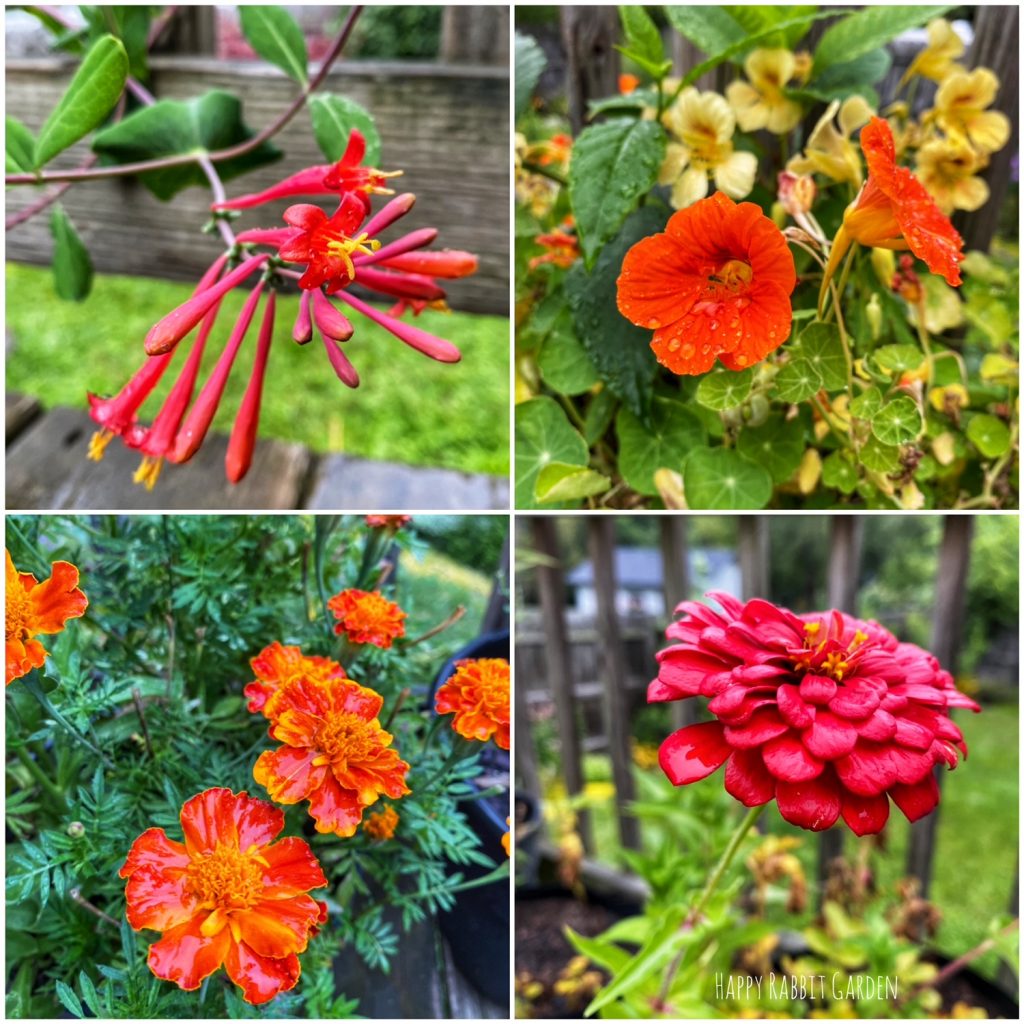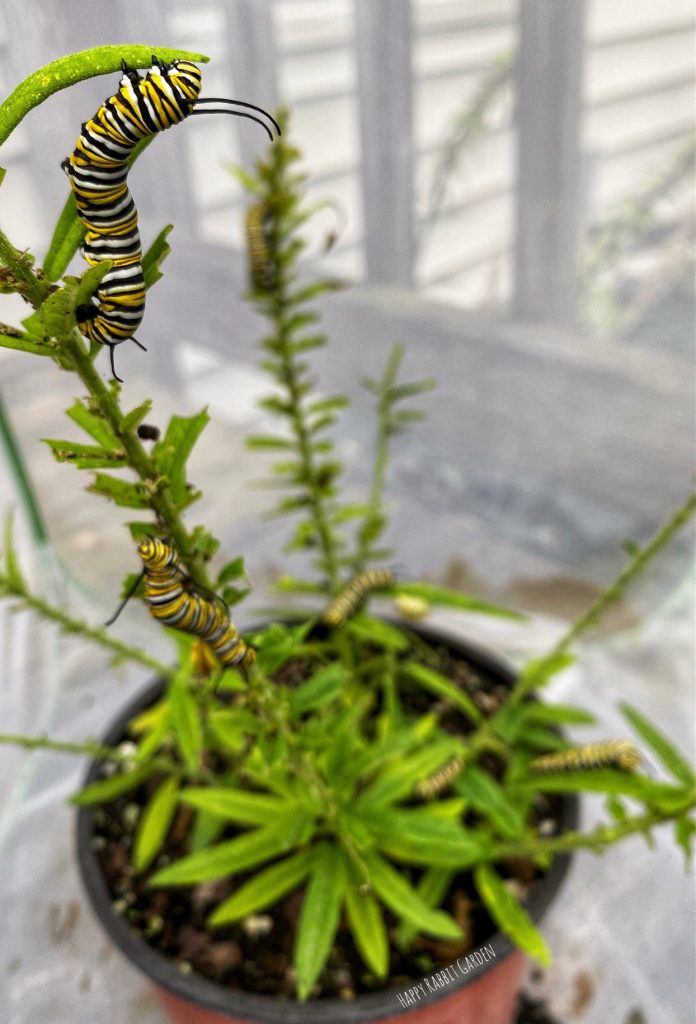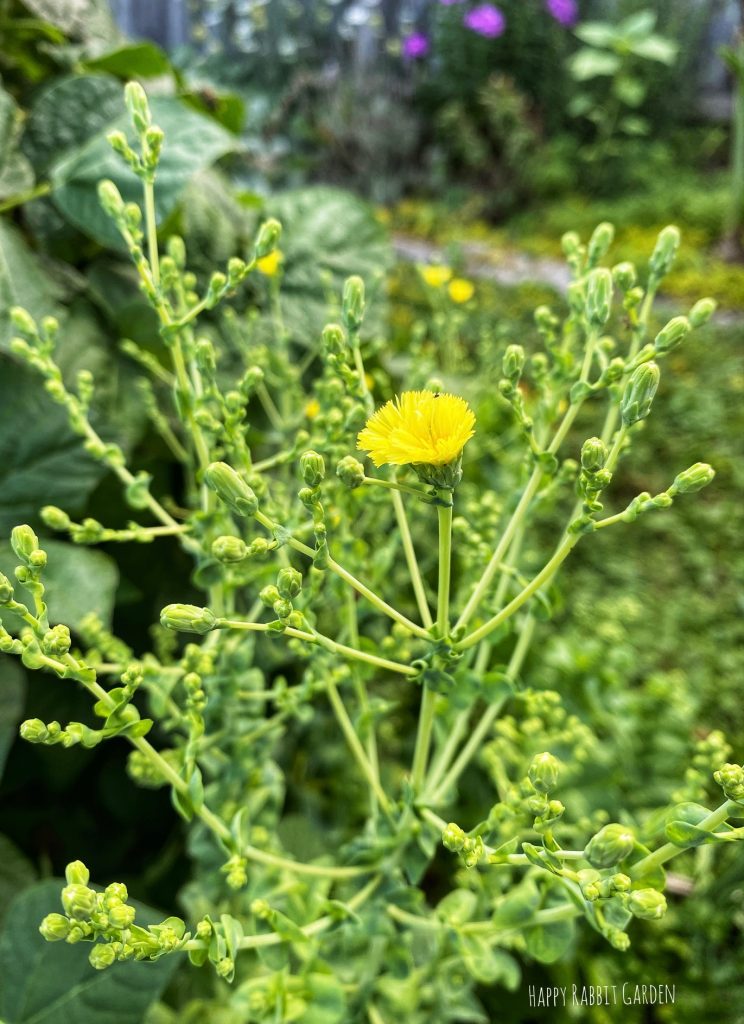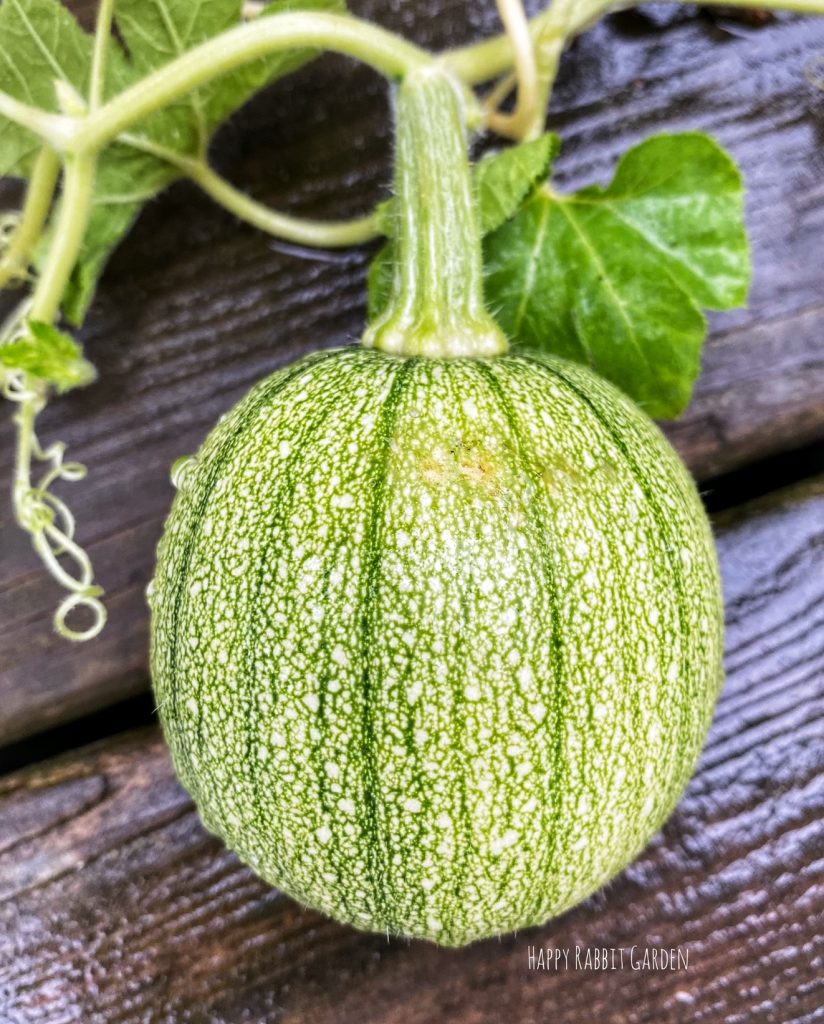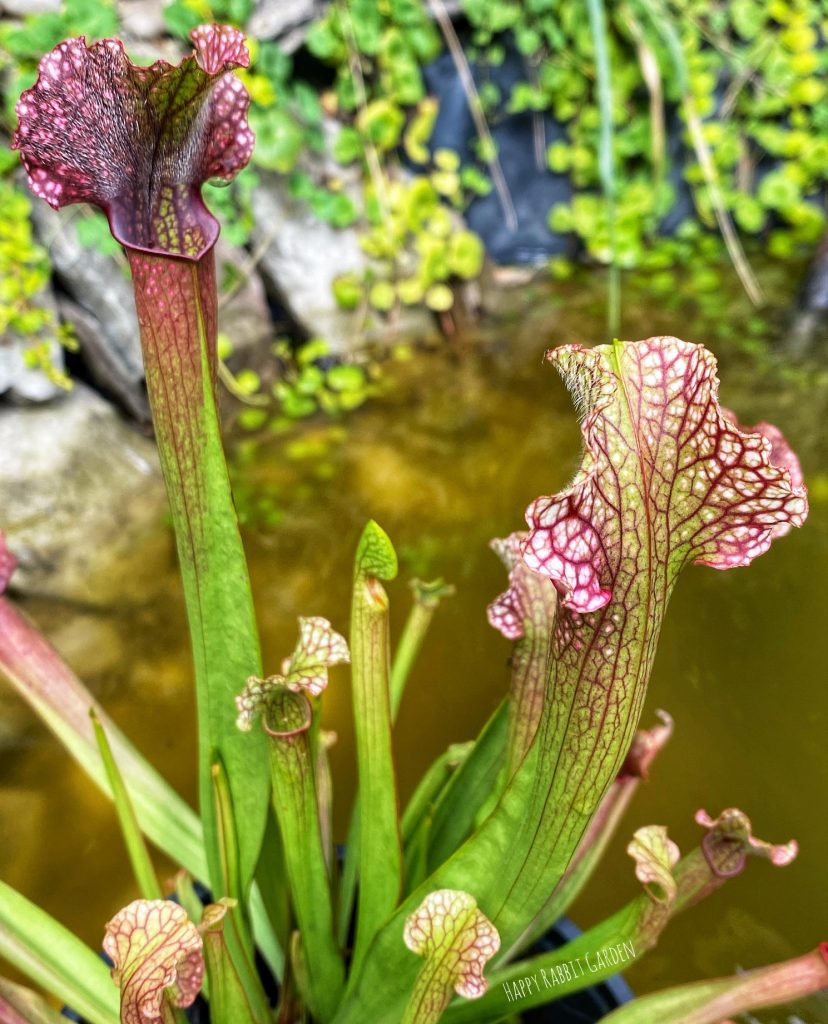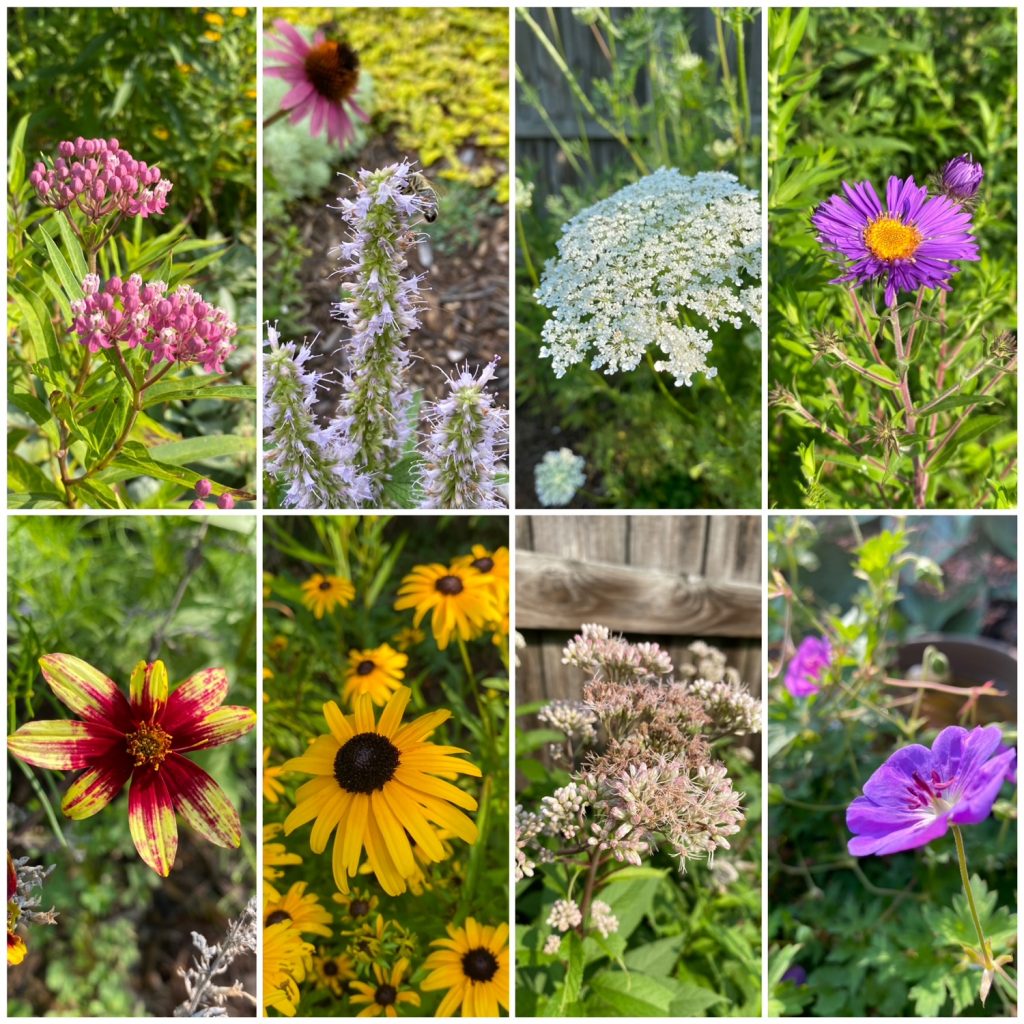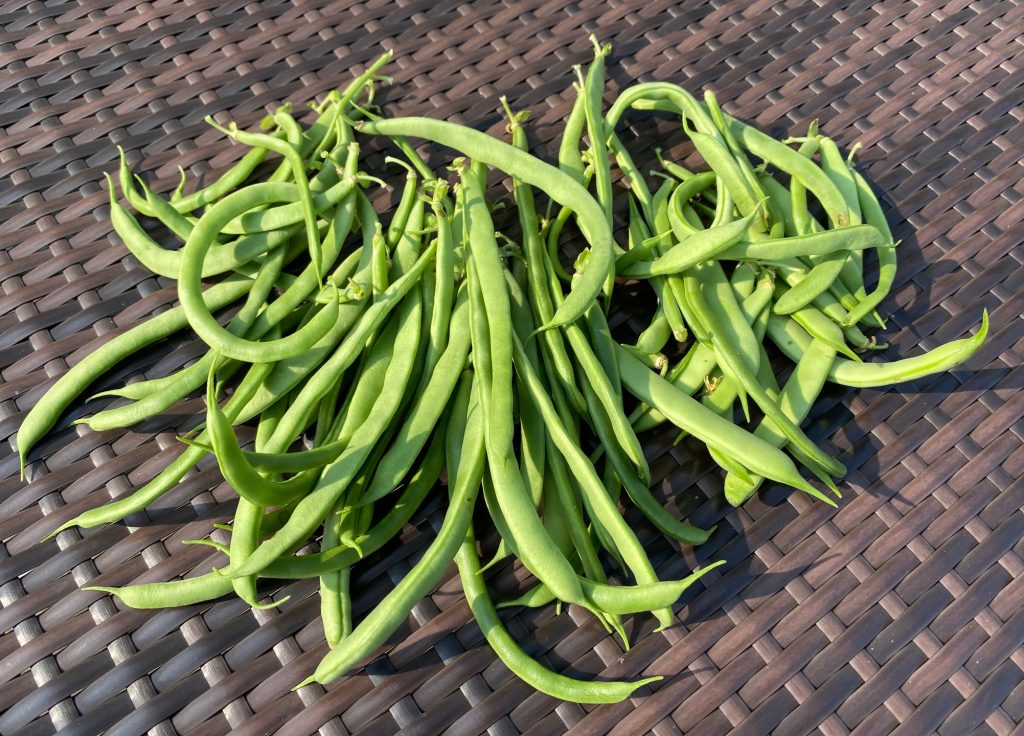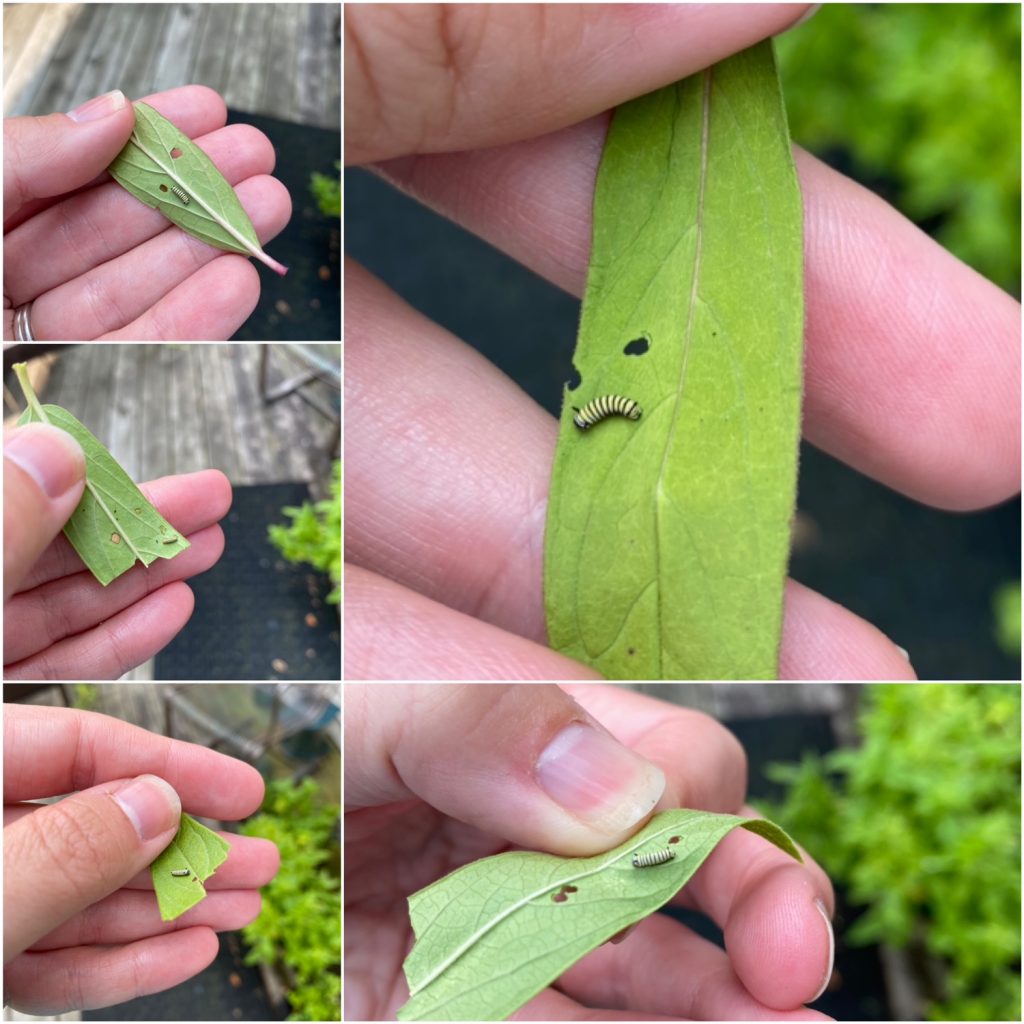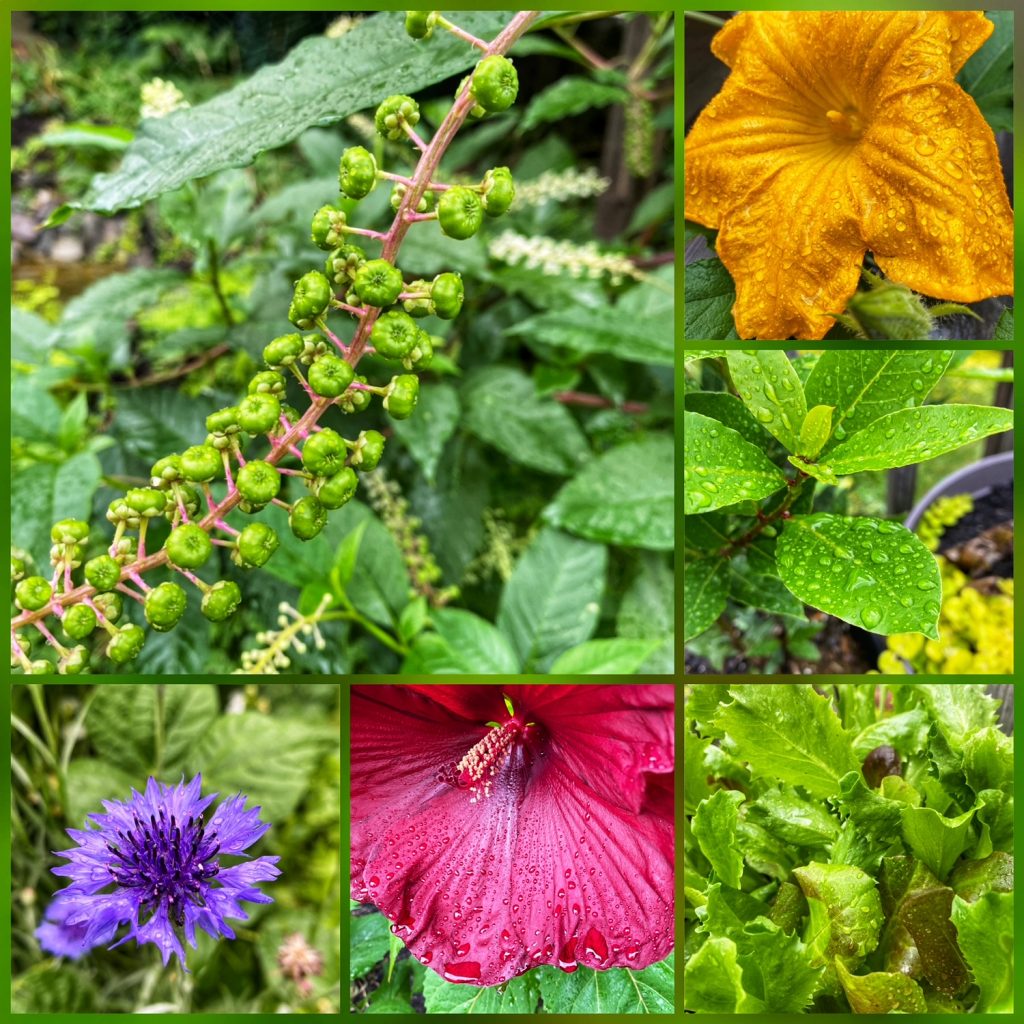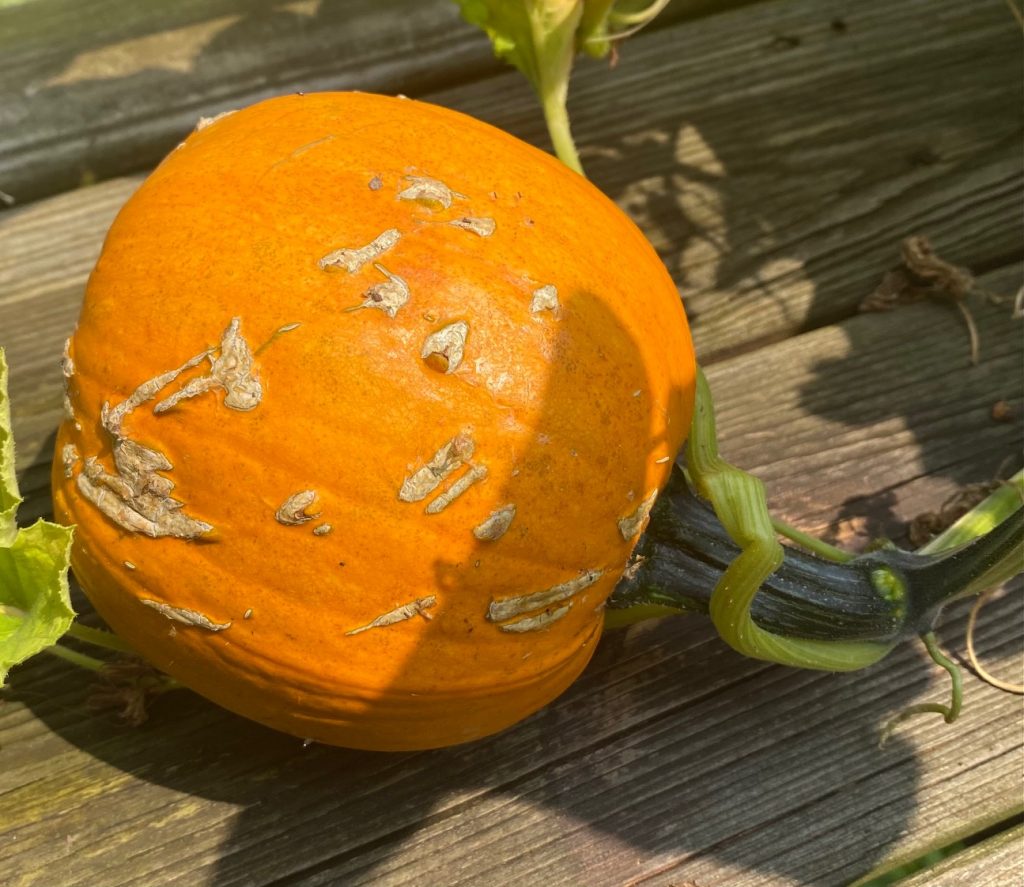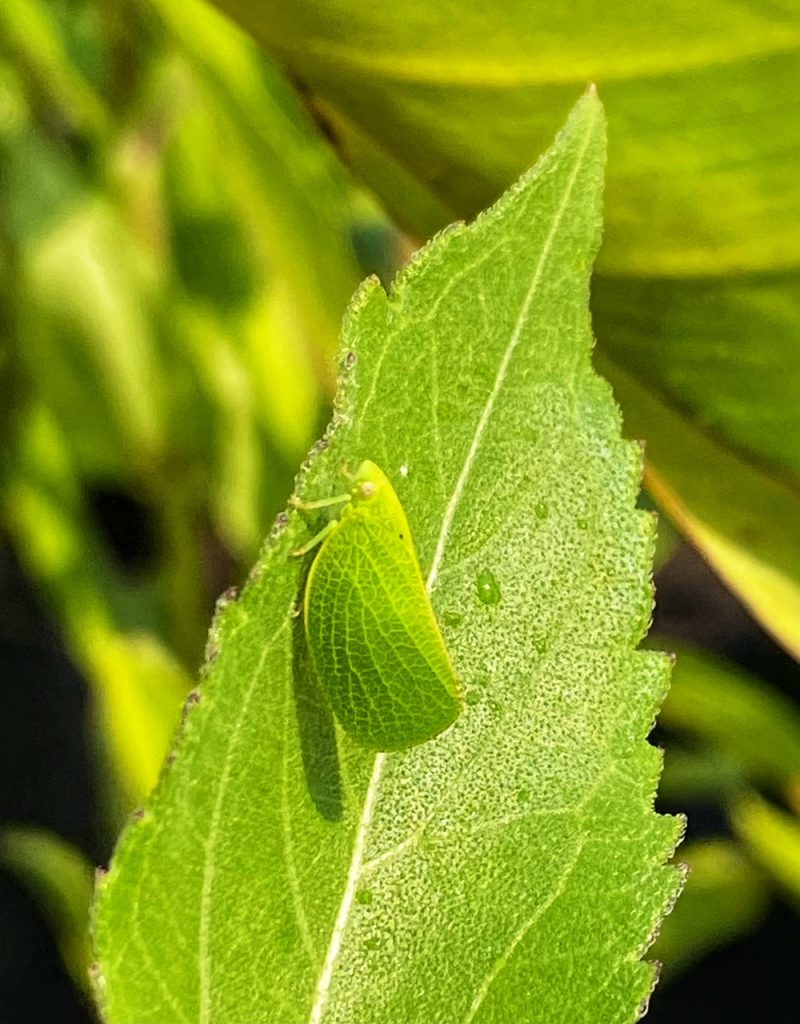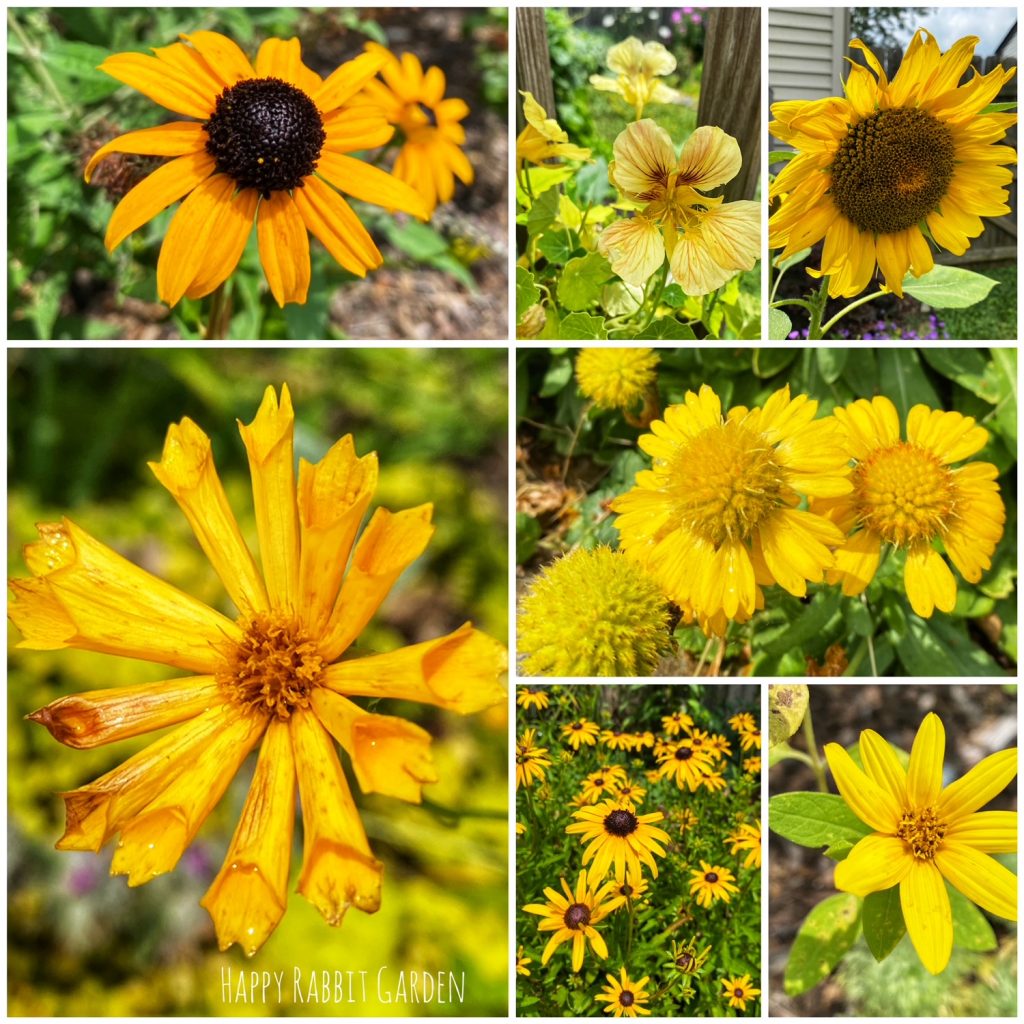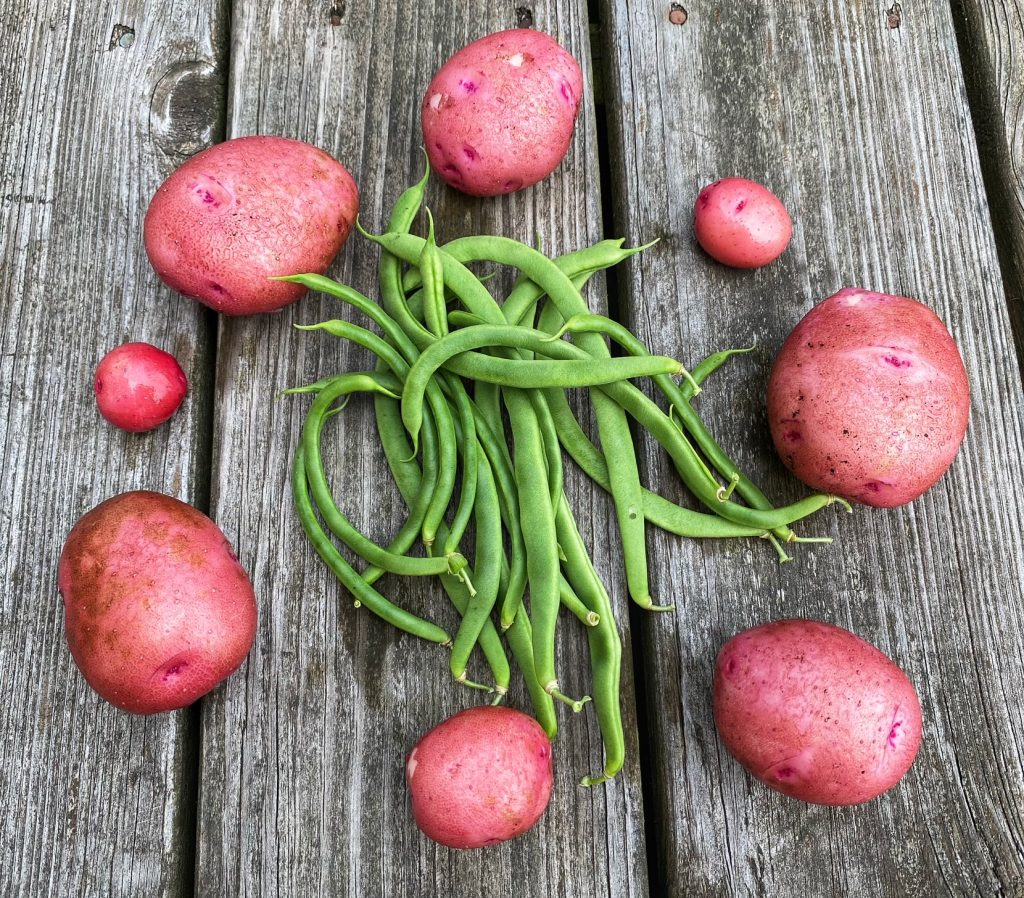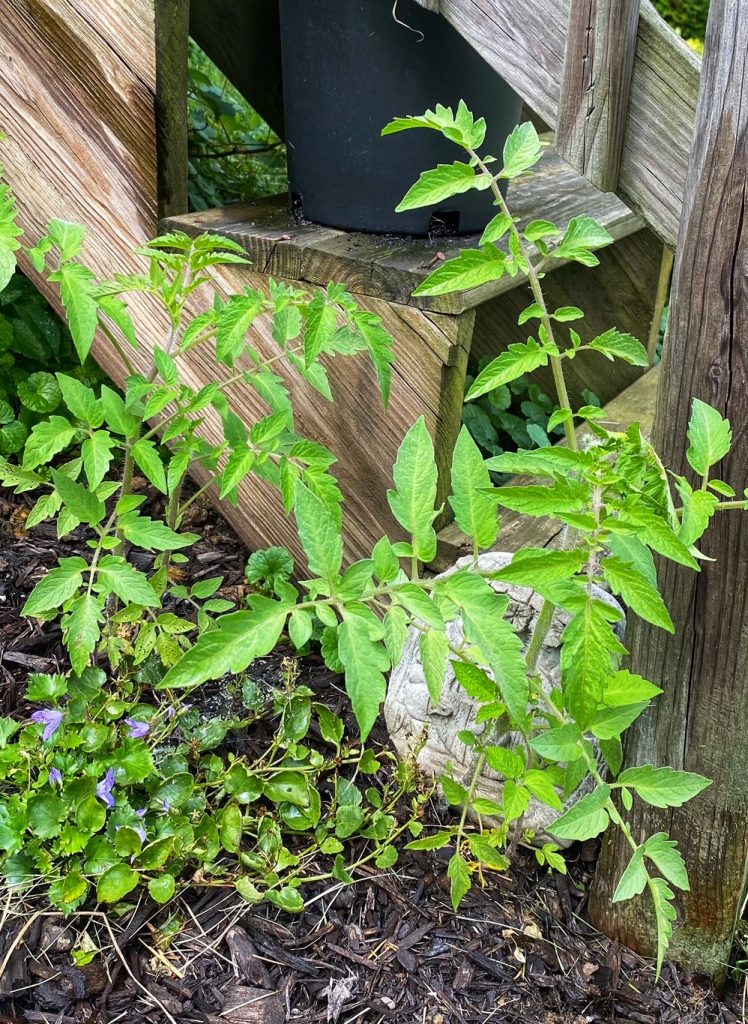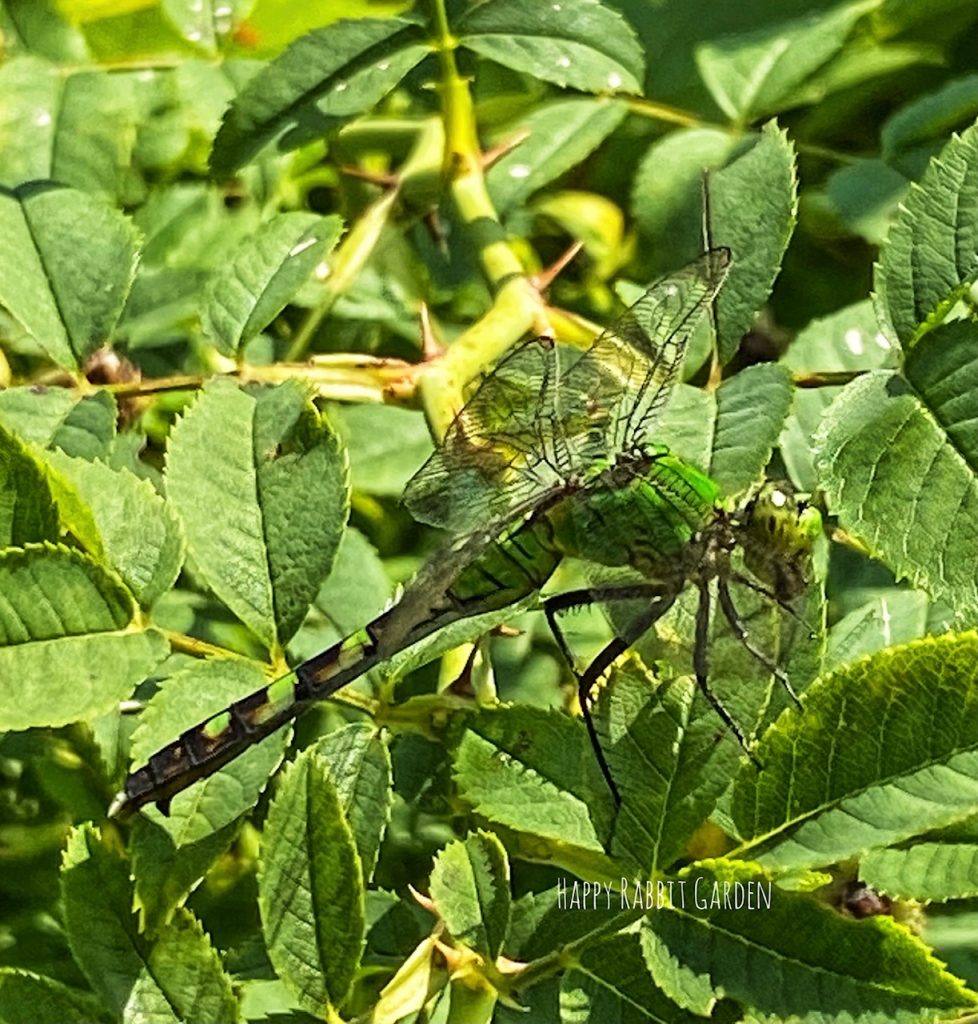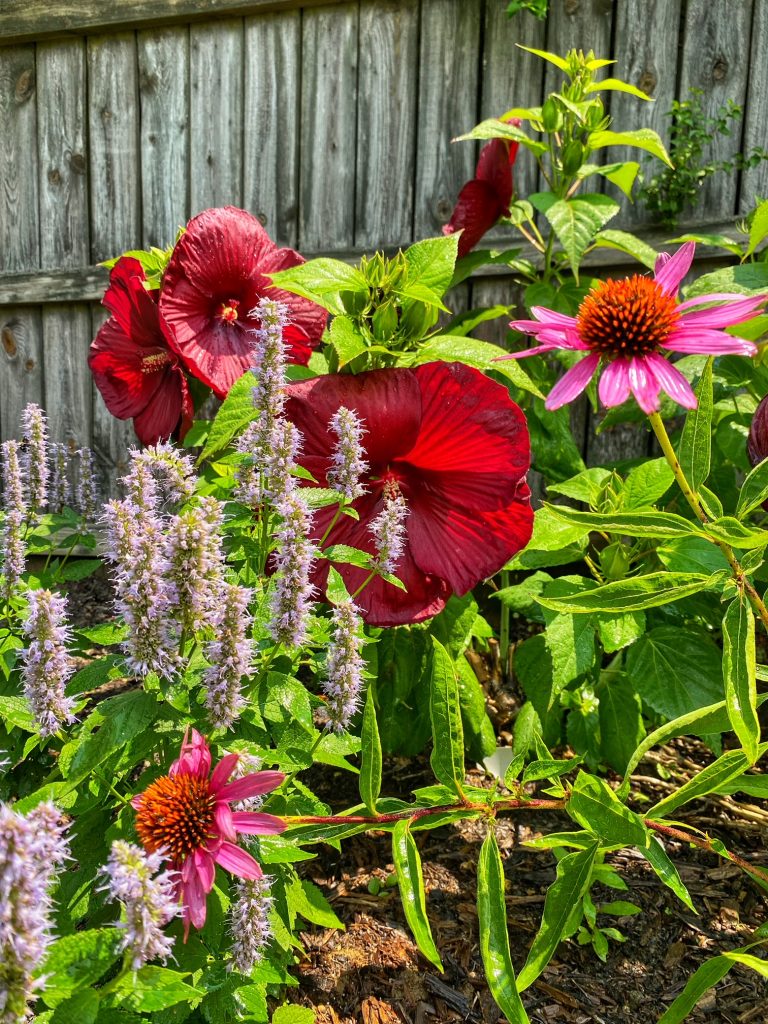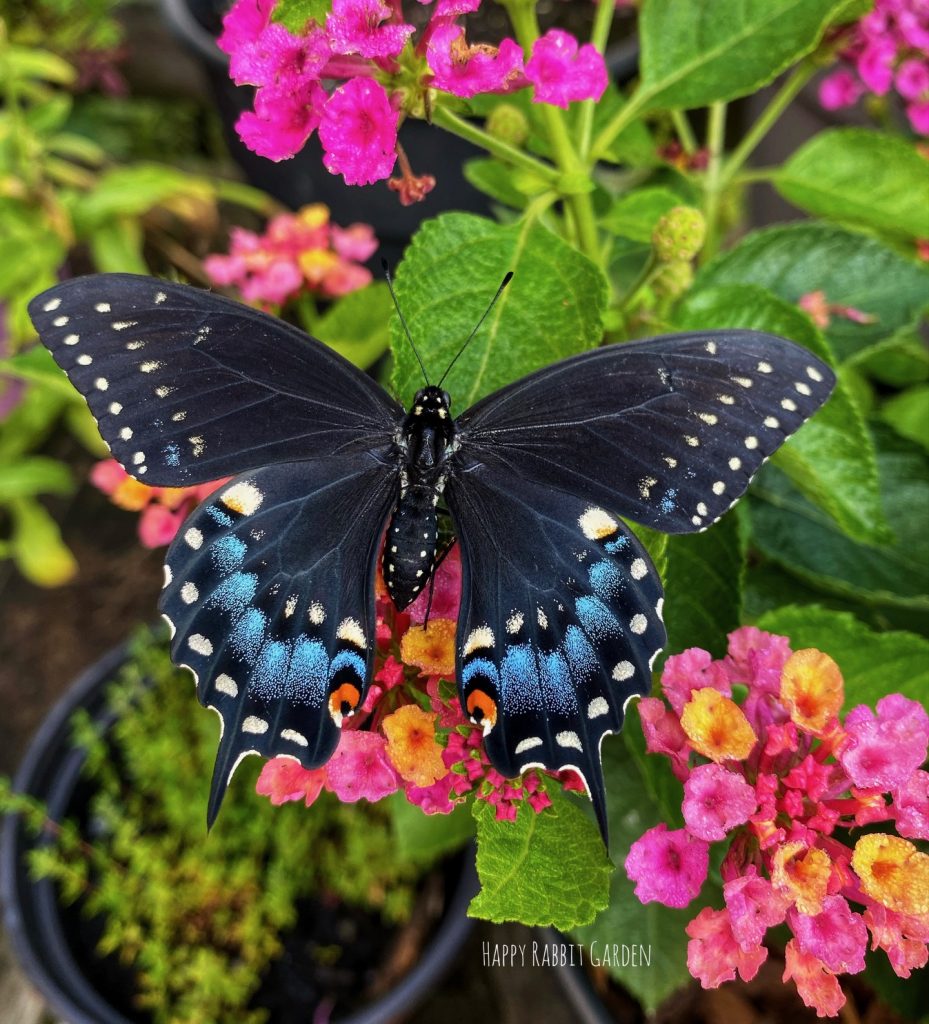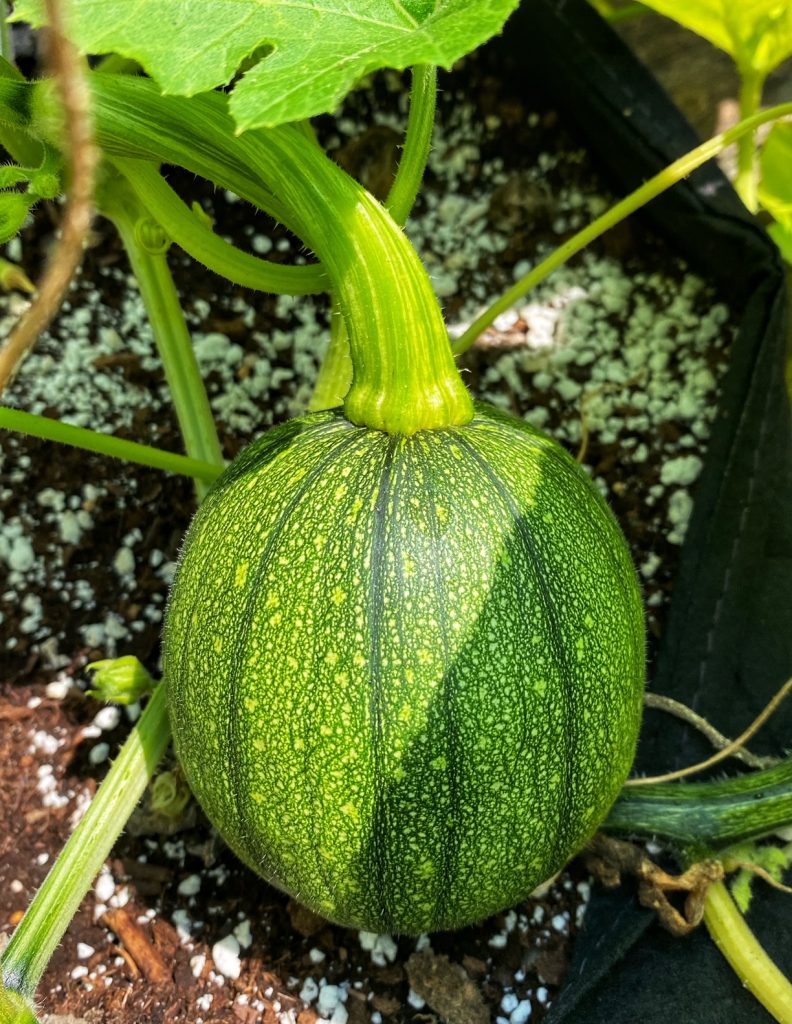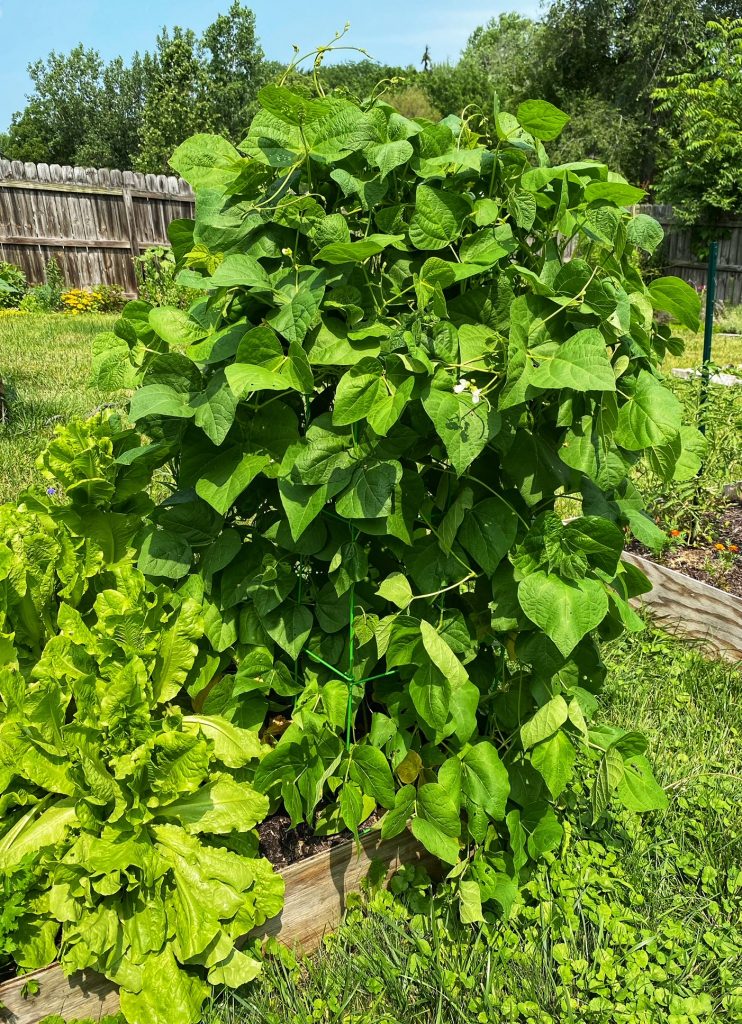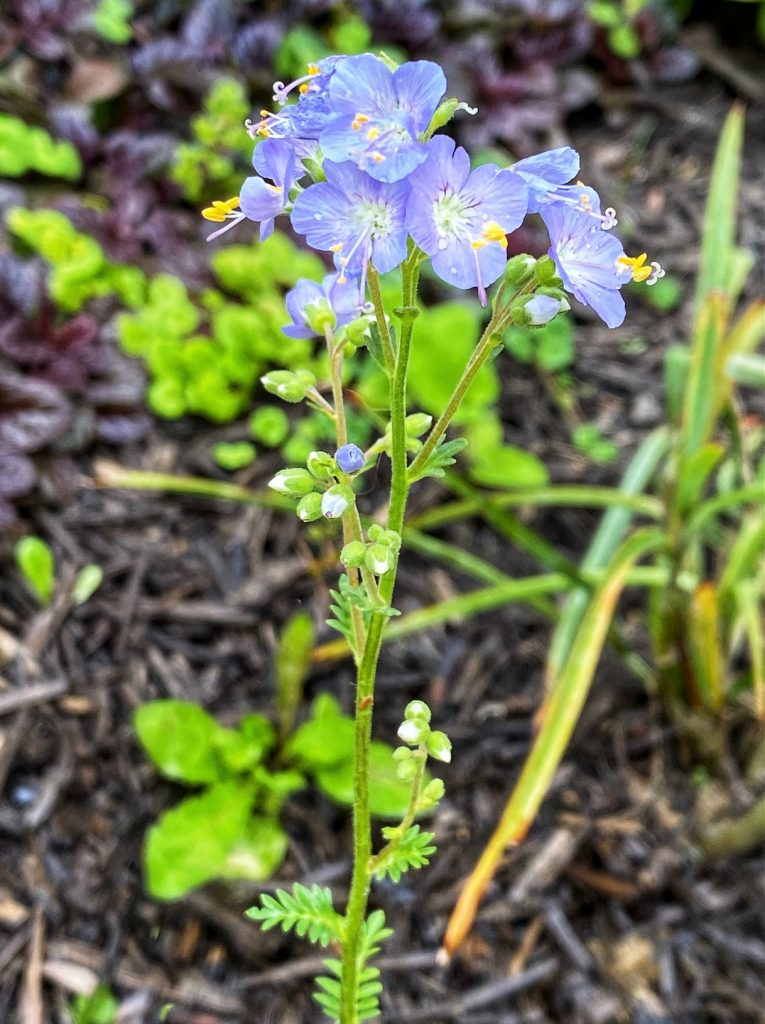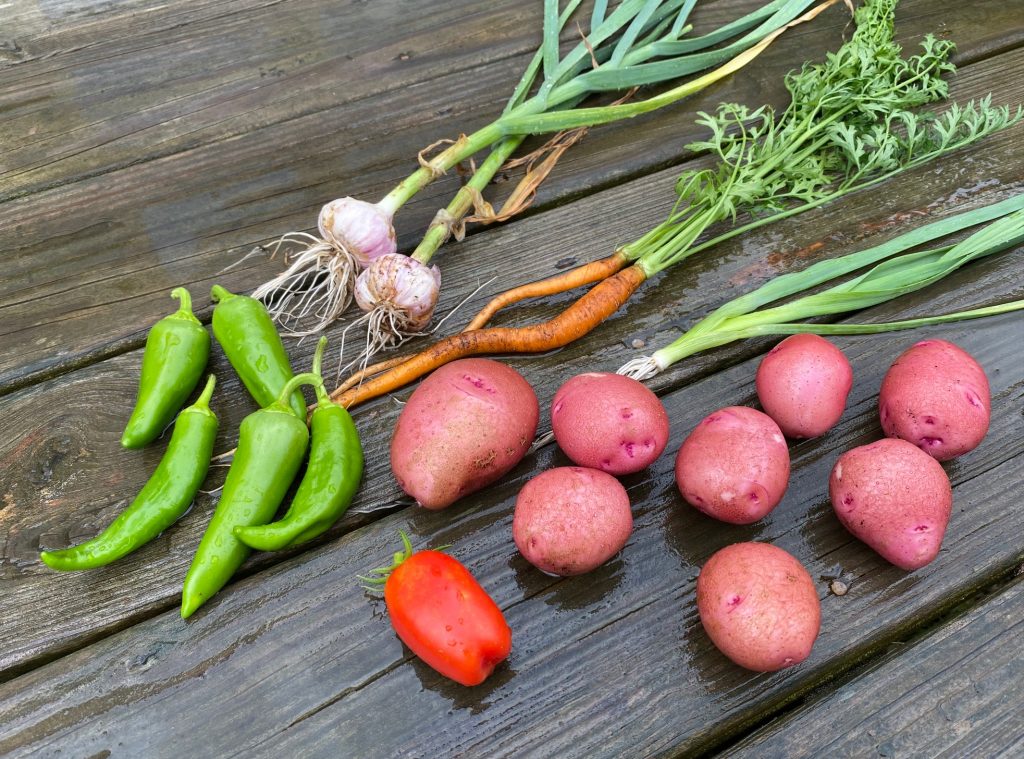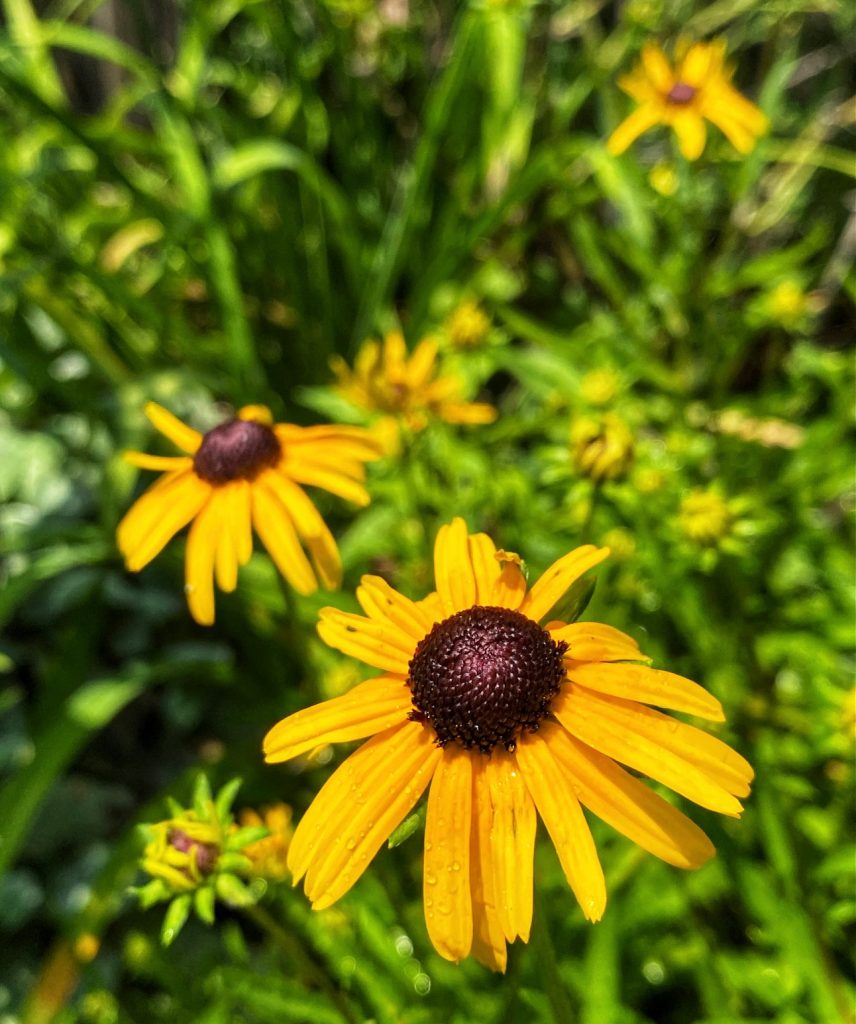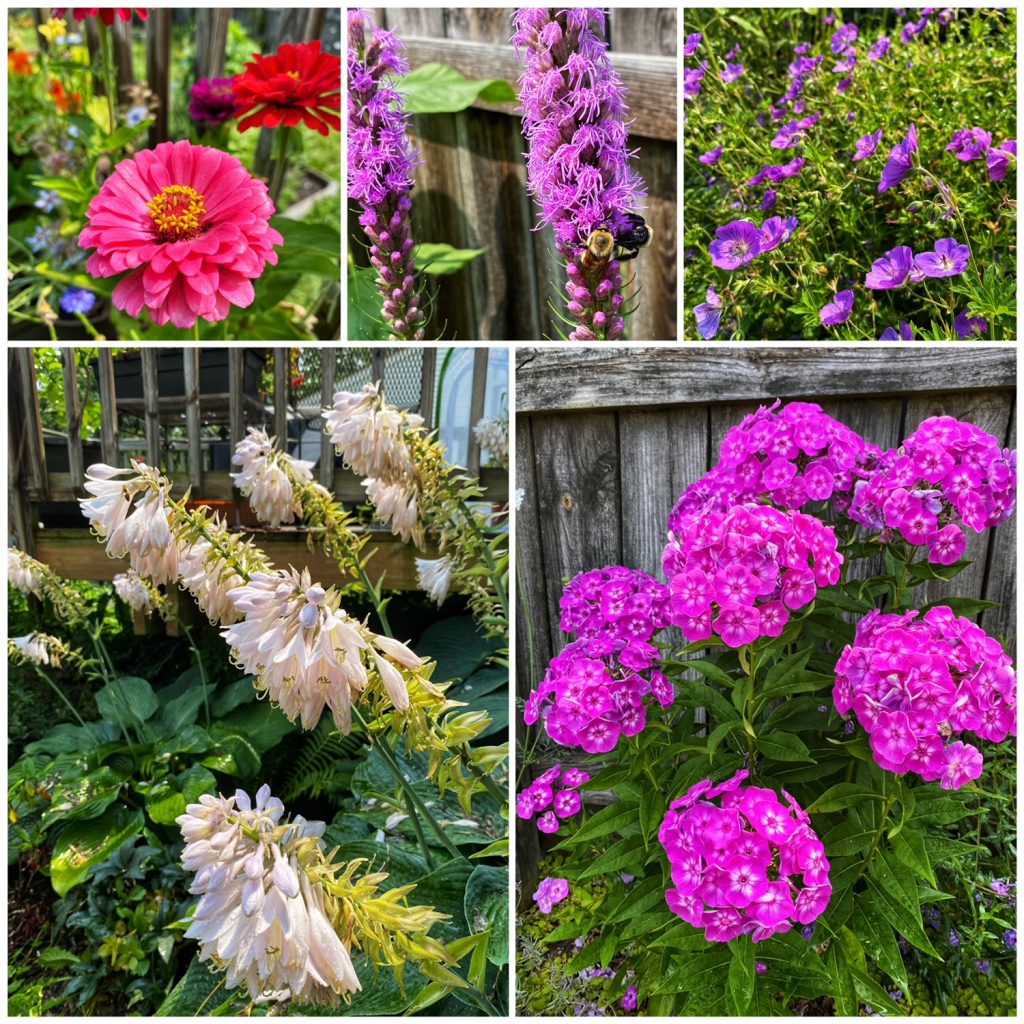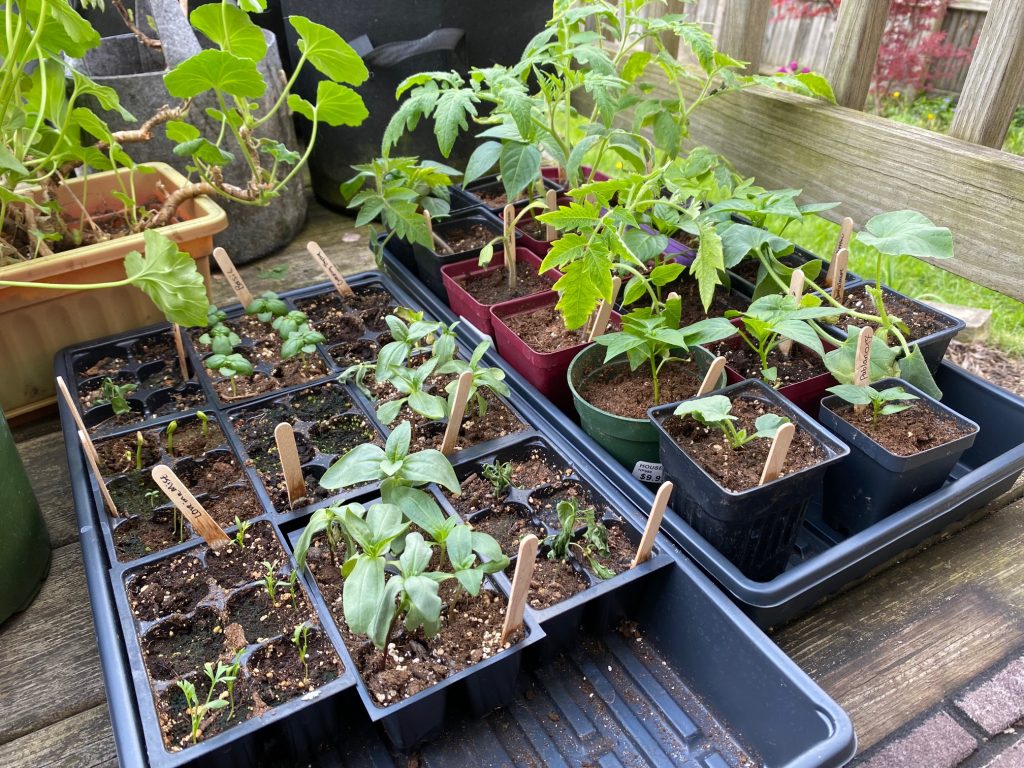
After waking up to thunderstorms in the wee small hours of the morning, I didn’t have tremendously high hopes for the day. But, in the afternoon, the sun came out, and it turned into a lovely time for gardening.
Today is the first of May, my favorite month in the garden. All the perennials are coming back up, there’s lots of trees and flowers in bloom, and it’s not yet so hot and humid that being outside for any length of time is miserable. We’re not quite past our last frost date here in Central Ohio, so I haven’t moved everything outside quite yet. But, I was able to start hardening off the tomatoes, peppers, cantaloupe, and flowers that I’ve been growing from seed indoors. The process takes about ten days/two weeks, so by the time they are ready to plant in the ground, it will be warm enough to plant them in the ground.
The deck is already packed full of pots. I started a bunch of native grasses from seed to add to the borders along our fence: Prairie Dropseed (Sporobolus heterolepis), Big Bluestem (Andropogon geradii), Switchgrass (Panicum virgatum), Indian Grass (Sorghastrum nutans), and Broom Sedge (Andropogon virginicus). There’s also pots full of strawberries, potatoes, thyme, chives, mint, and a bunch of native perennials, like Common Milkweed (Asclepias syriaca) and Wild Bergamot (Monarda fistulosa). The cold frame filled up very quickly this year, but we’re about past the time where I need it. Looks like I skated by starting too many seeds for yet another year!
Out in the raised beds, things are also filling up. Our asparagus is in its fourth year, so it’s really coming in nicely. We’ve already been able to enjoy a few harvests on the grill. The garlic I planted last fall is also looking quite nice. It should be time to harvest those bulbs here in a few weeks. Also out in the beds are some carrots, leeks, onions, snow peas, and potatoes. We’re going to have potatoes coming out of our ears this year. I have four grow bags full of them on the deck, and two more rows of potatoes out in the raised beds. I’m just trying to represent my Irish heritage well!
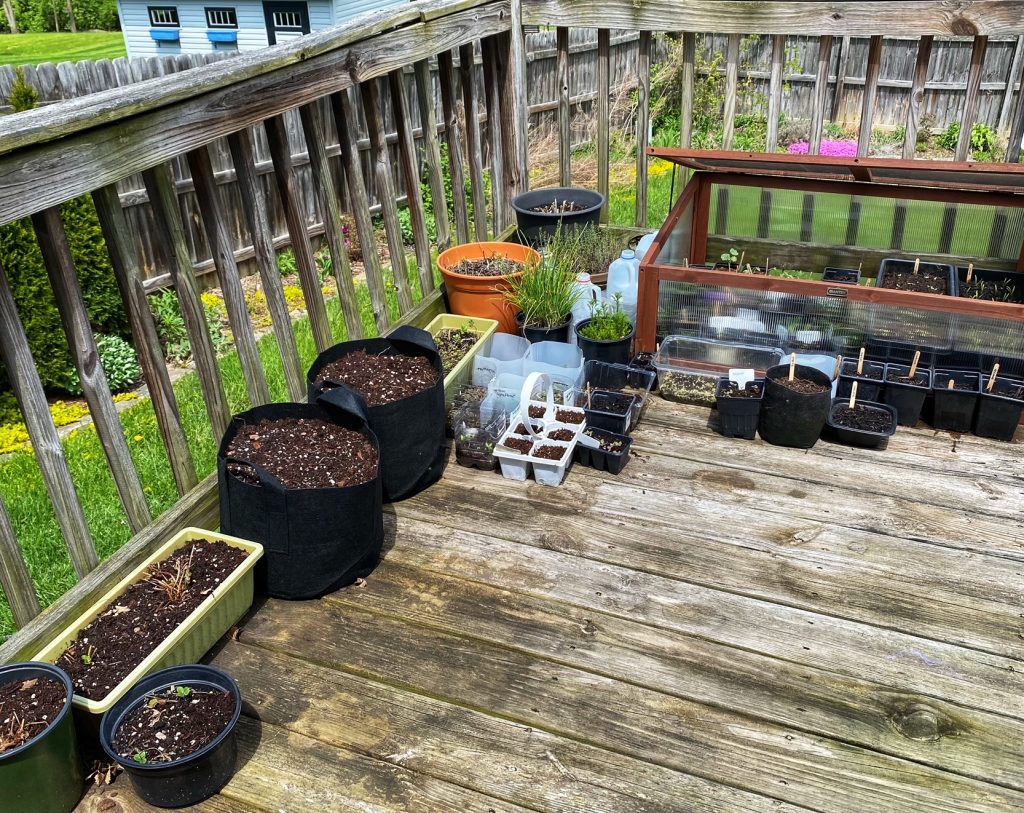
Just off of the raised beds is the wildlife pond that went in last year. I’ve had a few people ask how the pond had its start in life, so I thought I’d share the tale again, and give an update.
I’d had a small water feature in mind for a few years, but I wasn’t sure about what to put in. Fountains are EXPENSIVE and I thought a pond would be too much upkeep. Two years ago, I added a few small, shallow pots to the landscape, filled with water for the birds and pollinators to enjoy. I highly recommend this. It’s a simple way to help lure more wildlife into the yard, and things are easy to clean and maintain. But, with every viewing of the BBC’s Gardeners World, I wanted more.
Our lot is just over 6,000 square feet, which is below average for the US (you people with acreage are really throwing off the curve). It’s more than big enough for two fairly lazy people who hate lawn maintenance, and as I searched online for examples of wildlife ponds, I knew the yard was large enough to fit what I had in mind as well. I wanted something about 3′ by 3′, in a circle-ish shape, and shallow enough that I wouldn’t have to do much digging to put the thing in. So, one day, I told the husband that we were putting a pond in, and we started to dig. Well, actually, back that up. First, I called 8-1-1 and had the utility companies come out to mark our electric and cable lines so we wouldn’t hit anything. If you’re ever doing any digging in your yard, for a tree, a pond, or any kind of larger hole, Call Before You Dig!
So, yard spray-painted with lines marking the important things, we mapped out the spot for the pond with an old hose. I’ve seen this done before, and it’s a great way to “see” what your new project is going to look like before you start digging around. Just use the hose like a border, and make the shape you want. Once we had things outlined, we started digging.
The pond is about 2′ deep in the center, with tapered edges, and a little beach on one end. I specifically wanted a wildlife-style pond in the yard, and for animals to be able to get in and use the thing, I knew a gradual entryway was required. Once the digging was complete, we added a lining, using plastic sheeting. The sheet is fairly thick, and I folded it in half to add even more oomph to the lining.

Next, we added some river rock and pebbles to the bottom, and along the edges. Then, larger flat stones went in around the border of the pond and along the sides, to hide the plastic sheet. Once that was finished, we filled the pond with water, and I used some old branches and sticks to line one end of the pond and make it look more natural and wild. This makes a great space for wildlife to hide and nest. After a simple bubbler went in to circulate the water around, that was that for the pond.
The area where we put the pond is mostly in the shade. It was a damp area to begin with, that grew a lot of moss and henbit. So, I added in plants that liked the shade and wet conditions, and used mostly species native to our area to lure in even more o the things we wanted, like dragonflies and caterpillars. There’s a lot around the pond, all perennials: an eastern redbud tree, a buttonbush, maidenhair ferns, wild geraniums, creek sedge, blue flag irises, sweet flag irises, jack-in-the-pulpits, rue anemones, sea oats, spiderwort, a pitcher plant, and a little grouping of hostas and heucheras. The native plants and trees (all but the last two) support over 100 species of caterpillars!
Today, I added the bubbler back into the pond for the season. I started with a little, floating solar fountain. But, after a couple of months, it bit the dust. So, I added in a little aquarium pump, that plugs into an outlet on the deck. It helps keep water circulating and the sound attracts more birds to the pond for bath time.
Other than that, I don’t do a thing to the pond, except weed around it. (And, today, I pulled a few leaves out of the water so they wouldn’t clog up the bubbler). I don’t use any chemicals to clean the water- the bubbler takes care of that. And we’ve had the neatest wildlife show up in the short time the pond has been around: all kinds of birds, dragonflies (just one can eat up to 100 mosquitoes in a day, in case you’re worried about the water in the yard attracting too many of the bloodsuckers), beetles, spiders, other insects, and most excitingly, frogs! Two arrive last summer and I hope we see more this year.

So, that’s the wildlife pond. It’s doing exactly what I’d wanted: luring in wildlife. And, it’s been fuss-free. Is the water always 100% clear? Nope. Does it look like a well-manicured water feature? Absolutely not. But, those things weren’t my goal. I wanted the space to look natural and I think we succeeded. This spring has already been filled with joyful moments and I wander around the pond, looking at the different wildlife which lives there- the insects, the native wildflowers, and the occasional bird, stopping by to wade around the beach.
Hopefully, this helps get you started if you’re interested in adding your own pond to the yard. There’s lots of books and resources out there to inspire, including this one that I used from the Conservation Foundation. Happy gardening!

